While Vietnam is a relative narrow country in width, its length impacts how much of the area you can experience in the time you have available. Because we were continuing our travel from Cambodia into Vietnam and had time constraints, we were only able to visit the Northern half of the country. We are looking forward to returning to experience the Southern portion in the future. I would definitely recommend that travelers combine Cambodia with Vietnam as we did – they are great complements.
Hanoi
Vietnam’s largest city (Hanoi) has much to offer…once you figure out how to cross the street. I write this jokingly, but really, if you are waiting for a walk signal, a break in traffic, a crossing guard or some sign from the heavens that it is time to safely cross, you will likely find yourself standing at that same intersection tomorrow, and the next day, and quite possibly the day after that. Hanoi traffic is some of the most intense I have ever experienced. Sharing the roads are pedestrians, vendors, bicycles, cyclos (bicycle style tuk-tuks), cars, trucks, vans, buses, animals and countless scooters. There is limited sense of order except for major highway intersections. Otherwise, it is a bit of a free-for-all. Some tips:
- Walk with purpose and keep a consistent pace – do not speed up and do not slow down.
- Assume scooters and other vehicles will adjust their speed to go around you or provide you space to cross.
- Cross with others when possible, especially those who appear to have this figured out.
- Consider crossing after cars – scooters can stop on a dime to avoid pedestrians.
- Whatever you do, don’t turn around and go back – once you start, keep going.
A fun area in Hanoi is the Hoan Kiem District (also called Old Quarter). Here you find quaint shops, street markets, all the outdoor morning fitness and wellbeing options you could imagine, Hoan Kiem lake, bakeries, nightlife, temples and historic attractions all within a short walk if you can master the streets (if not, there are plenty of taxis or cyclos).
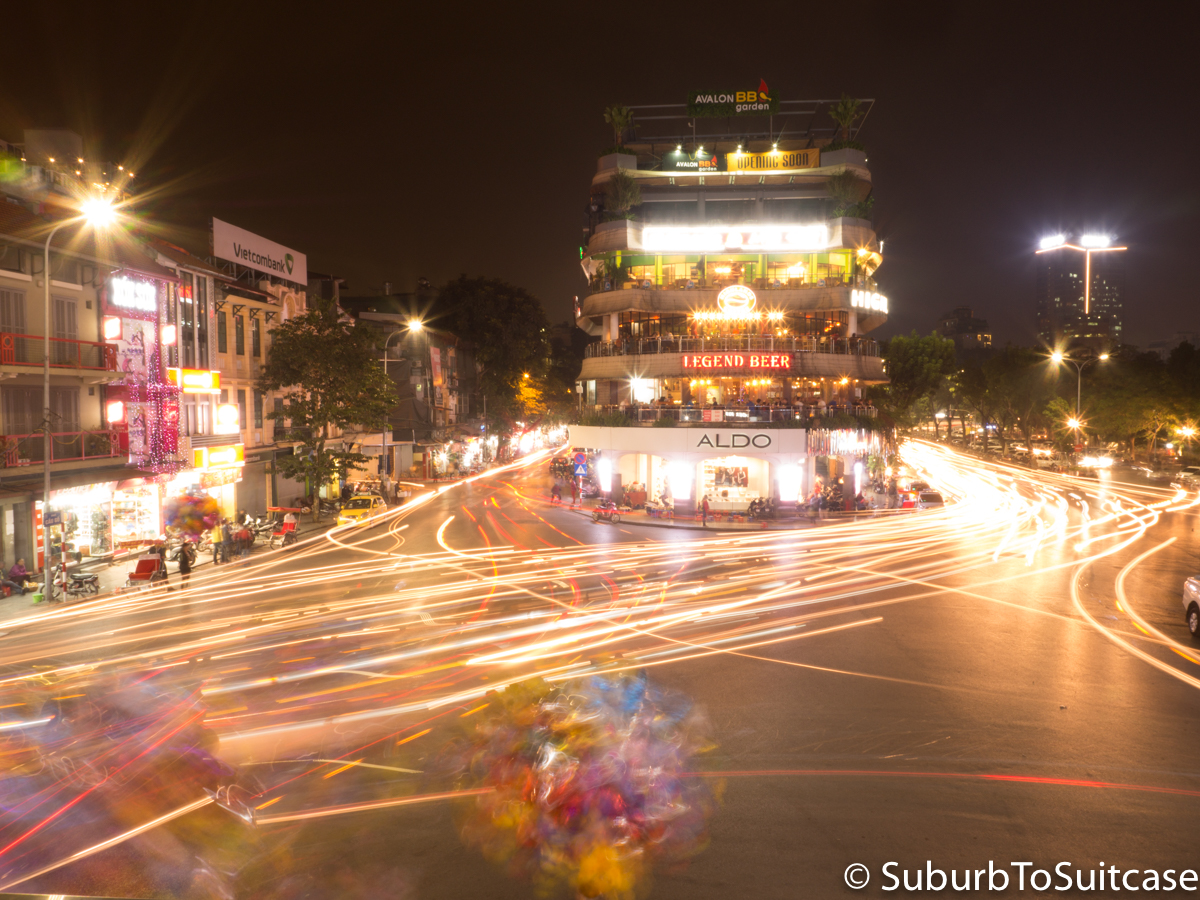
Typical traffic patterns at night in Hanoi’s Old Quarter
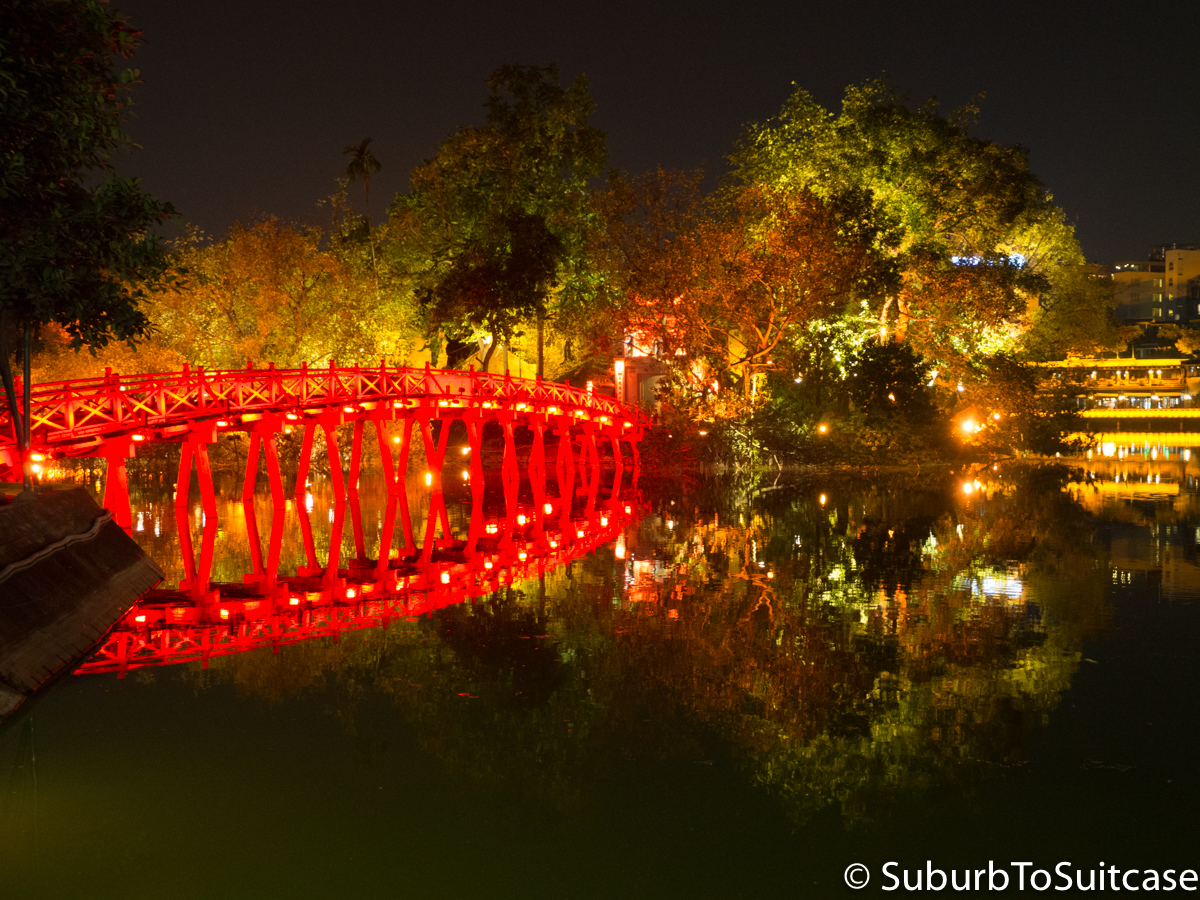
Serenity at Hoan Kiem Lake (Lake of the Returned Sword)…just across the street from all the bustling traffic
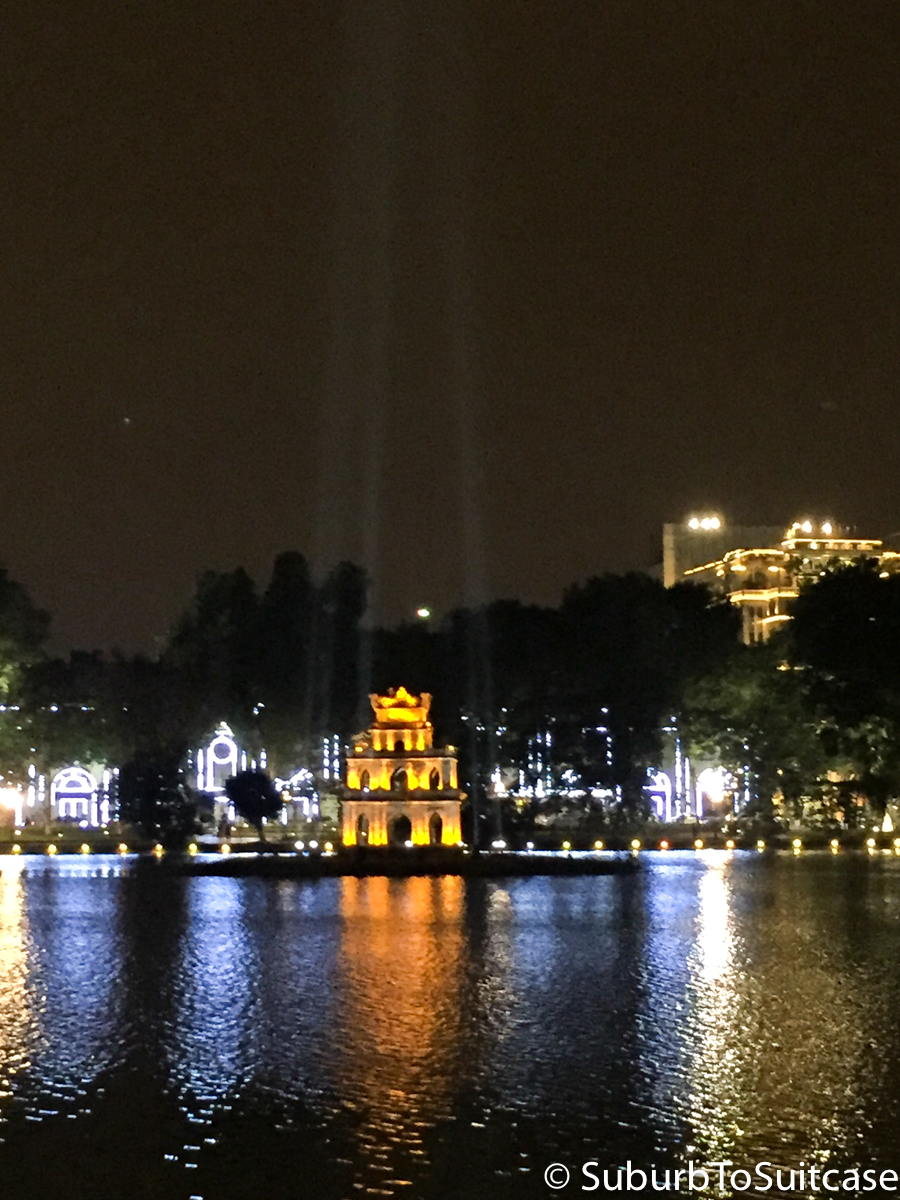
Temple in the center of Hoan Kiem Lake at night
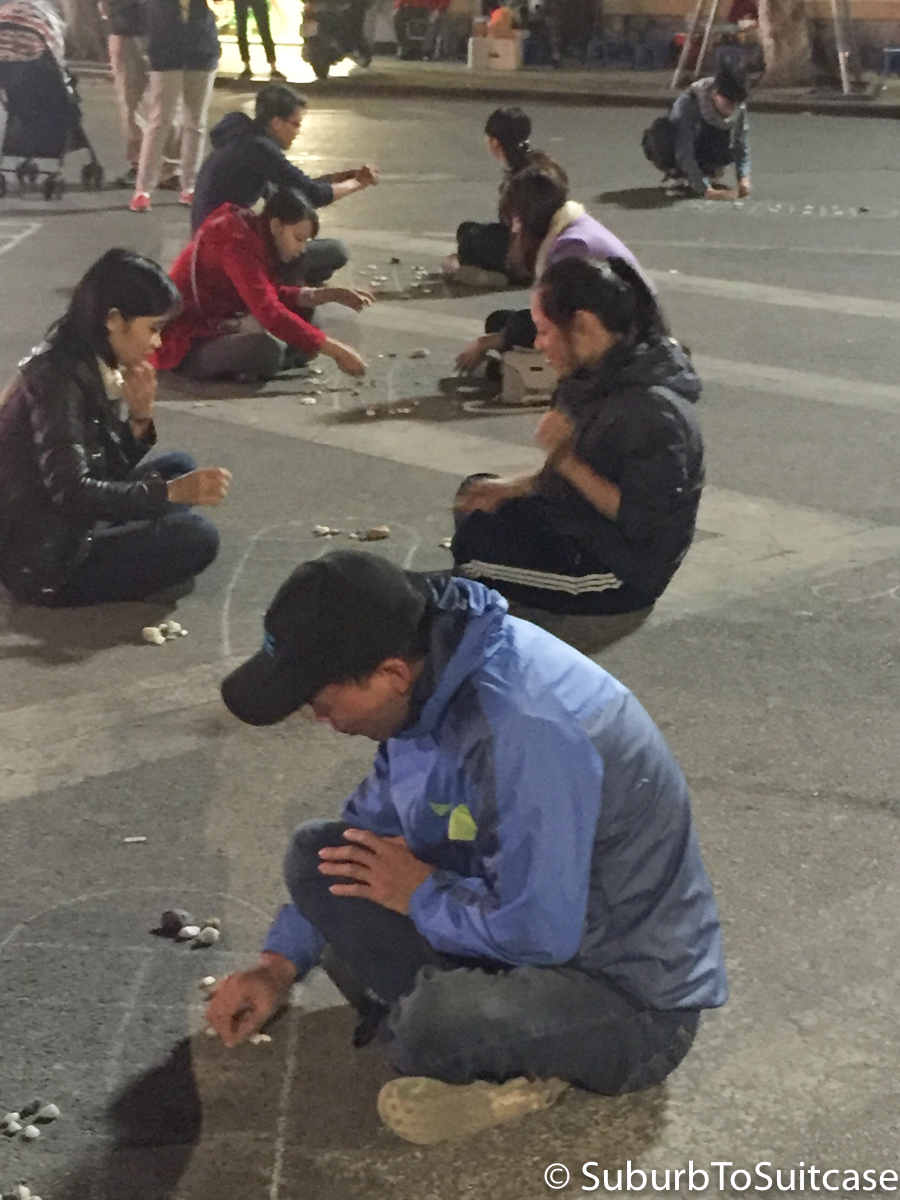
Some streets close at night for socializing – here, there is chalk to draw game boards and stones to play mancala
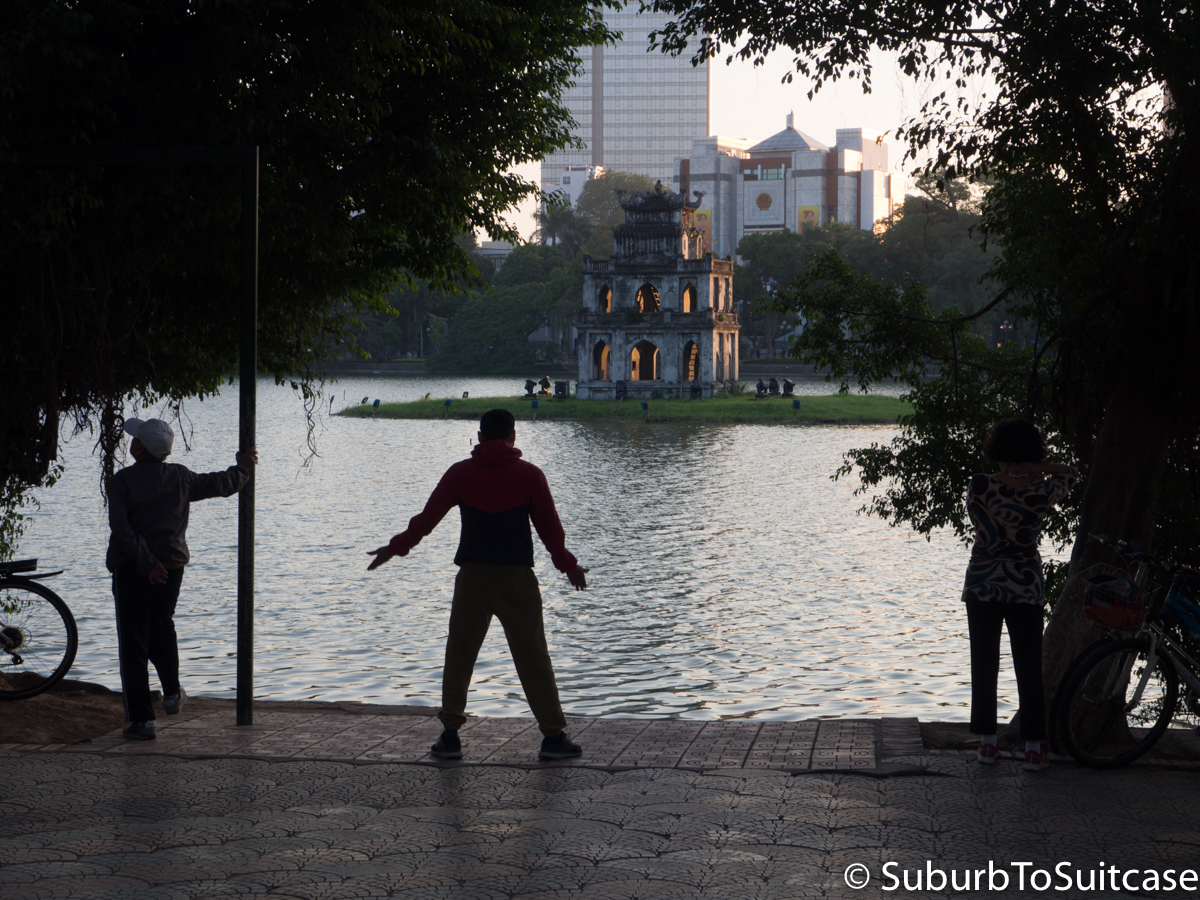
Morning greets residents in many ways – wellbeing, fitness and fruit/vegetable vendors
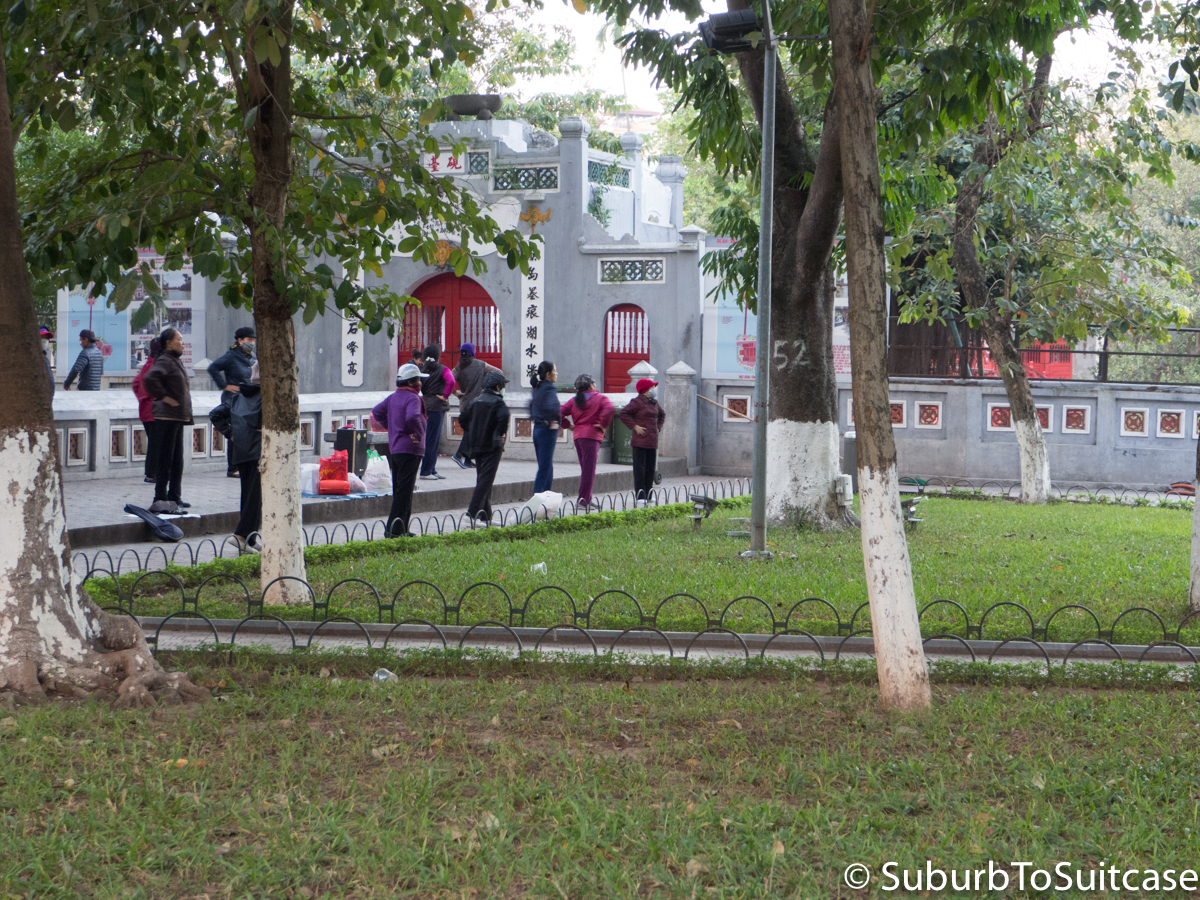
Morning meet-up exercise
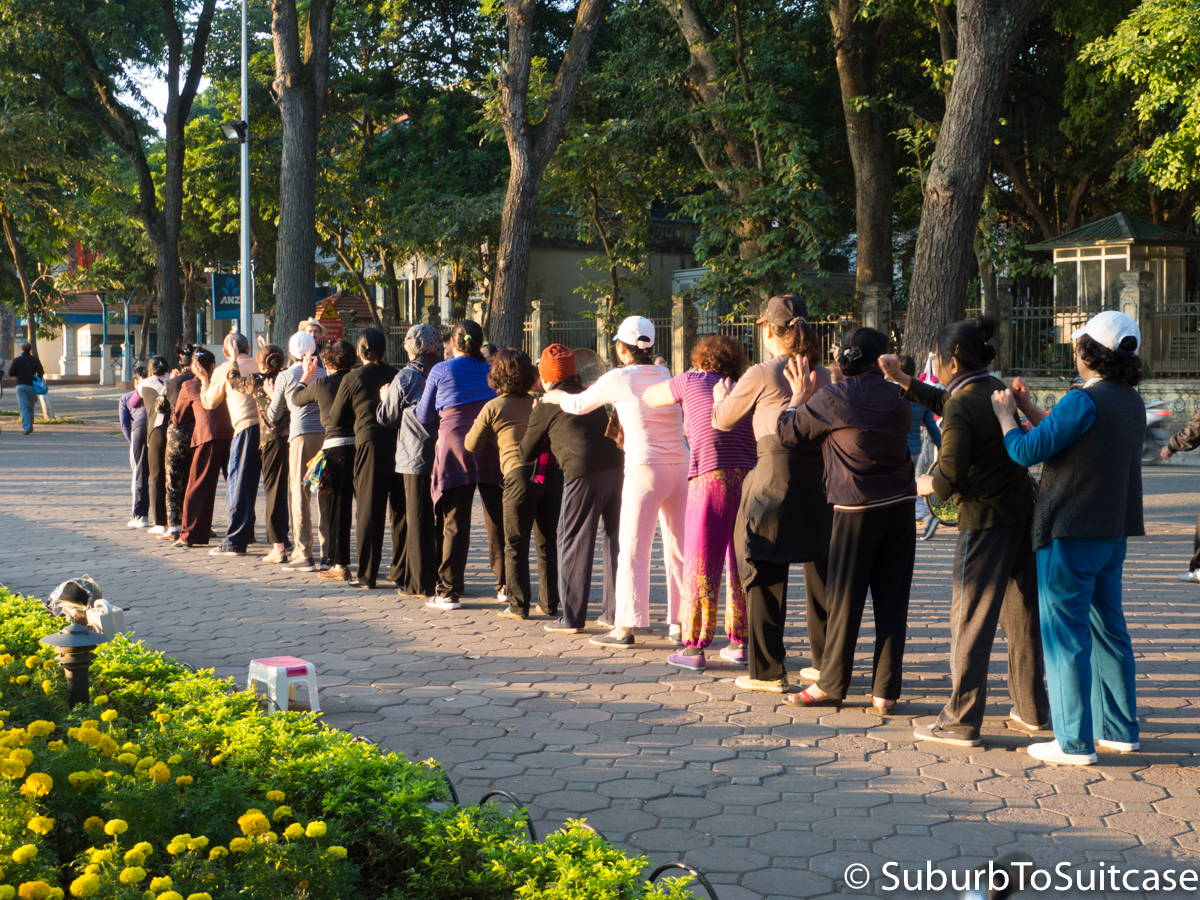
Morning meet-up massage
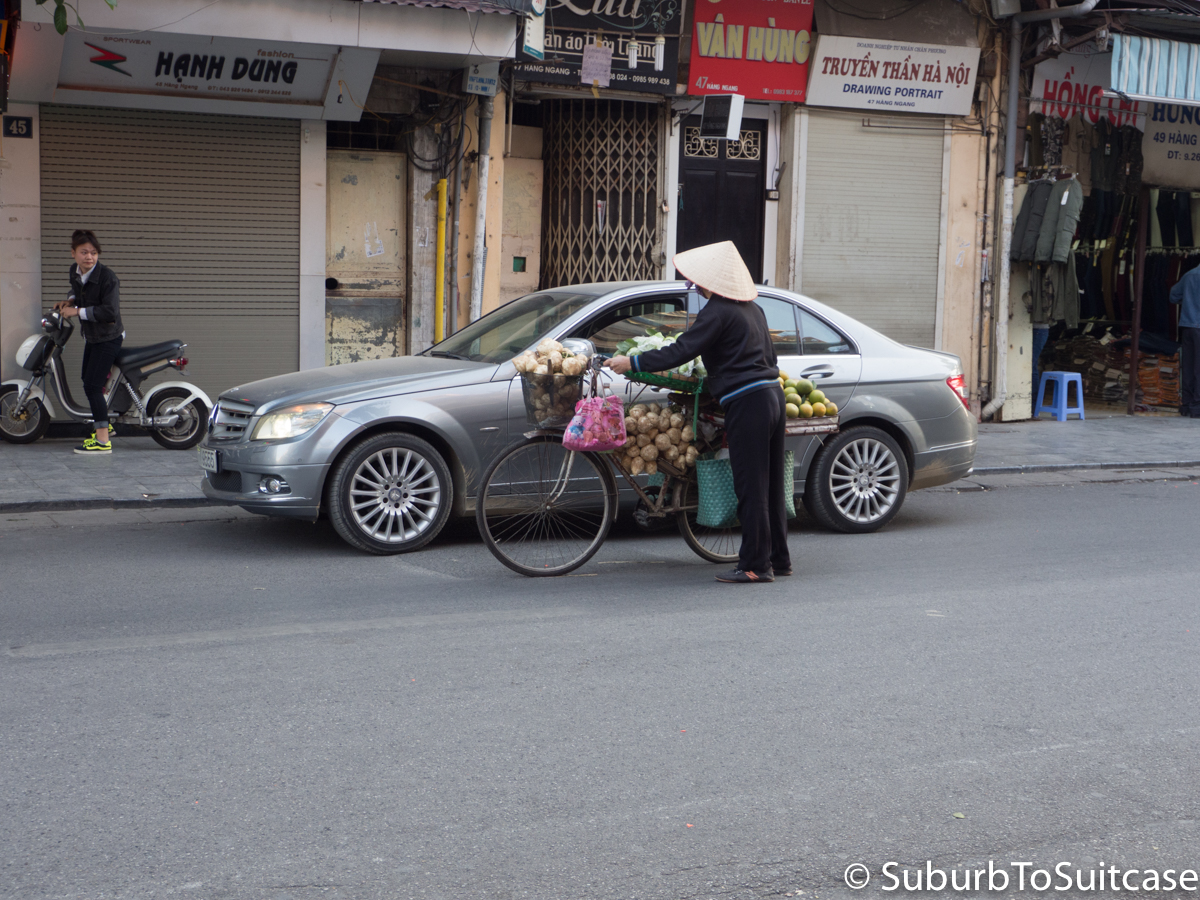
Vendors share the road, especially in the mornings
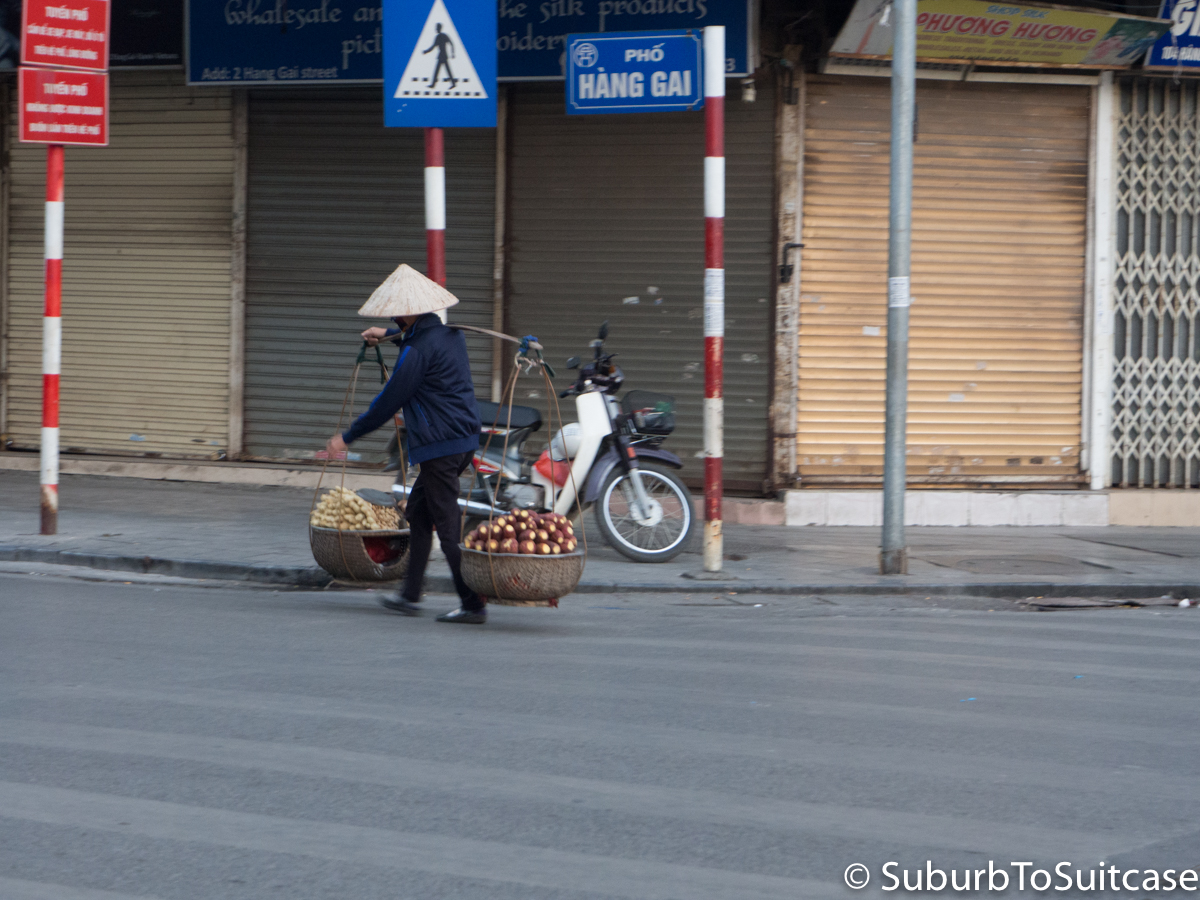
Heavy but well-balanced loads are carried through the streets
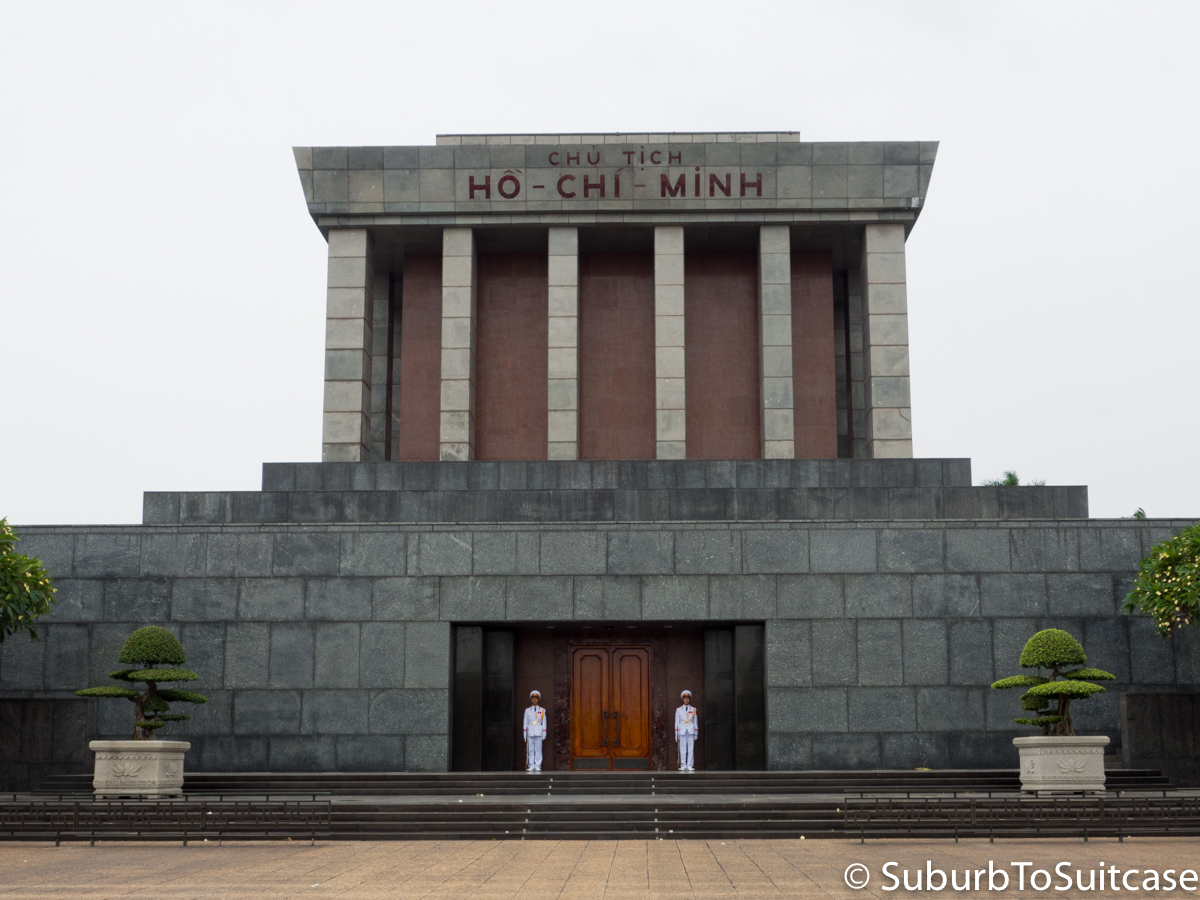
The Ho Chi Minh mausoleum is a must-see in Hanoi.
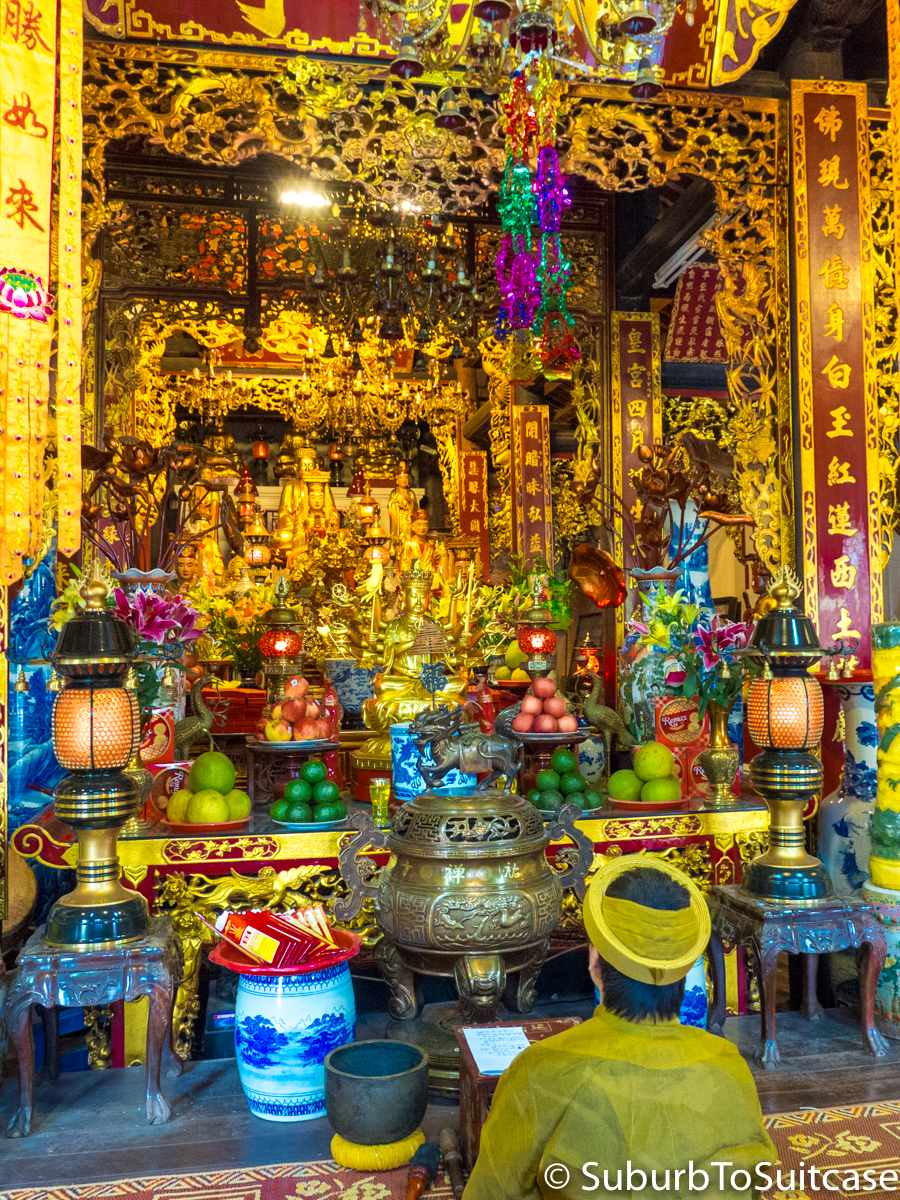
Temple near mausoleum (strict enforcement of covered knees and shoulders for entry)
Hanoi has maintained a portion of the Hoa Lo Prison (referred to as the “Hanoi Hilton” in the Vietnam War) and has re-opened this for self-guided tours. The location is in the middle of the French District and if you do not know what you are looking for, you might pass it right by. The prison was used to confine Vietnamese prisoners during French colonization and later to hold US prisoners of war. This can be an emotional historical site to visit as there are many preserved artifacts, rooms including cells, story boards and videos throughout. As you might expect, material is presented from the Vietnam perspective. Similar to visiting any museum or historical site, you may respectfully tour, choose to consume information at will and form opinions later from your personal vantage point.
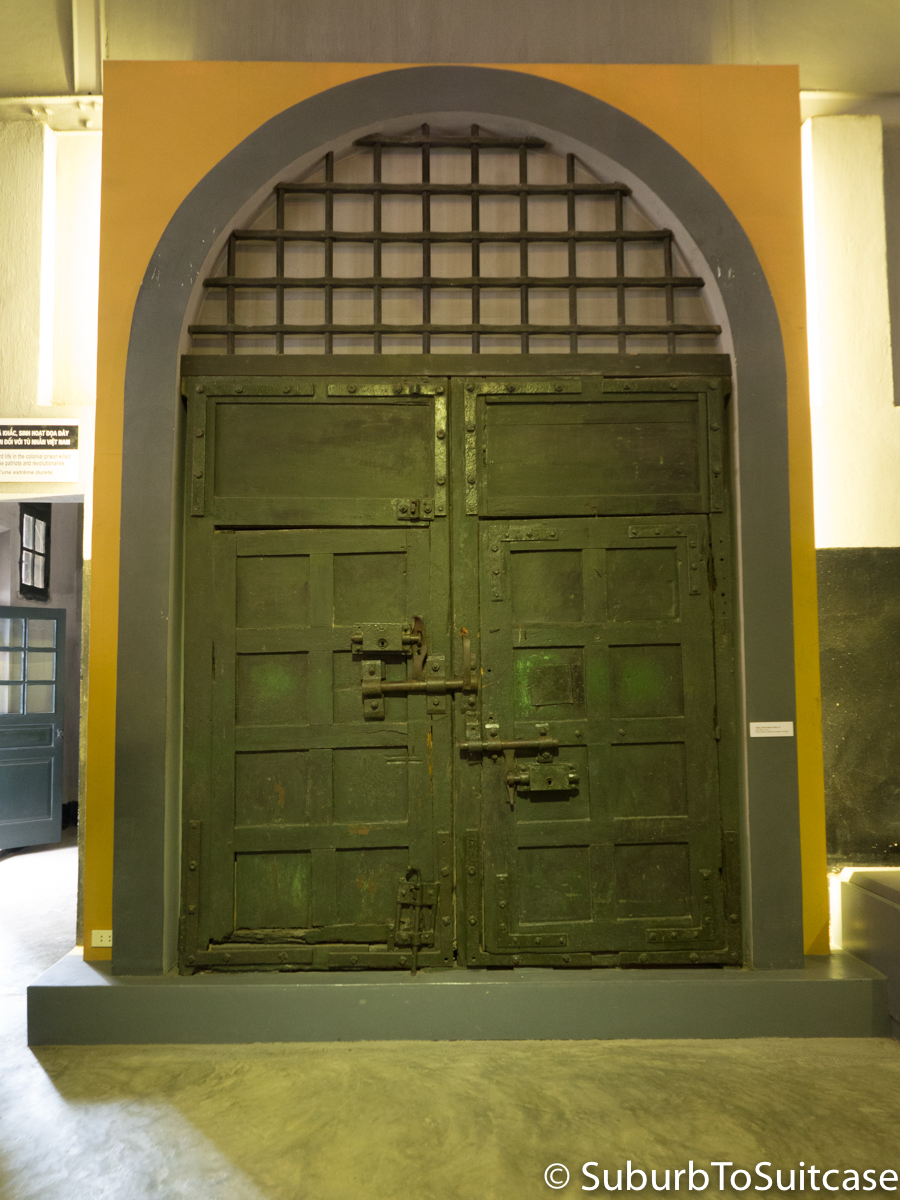
Original entry gates to Hoa Lo Prison
Haiphong
Our first stop beyond Hanoi was to Cat Ba Island. We arrived here via Haiphong and a number of locals along the way were surprised to hear that our path included train from Hanoi to Haiphong then fastboat from Haiphong to Cat Ba. Apparently this is a relatively rare travel path and most tourists take a bus. We chose the train/ferry combination because it was much faster and cost less. I would recommend this over the bus with a couple of caveats.
- Ensure you have Vietnamese money – do not expect to find other currency accepted along the way. I actually had to barter in the train station with some Brits in order to cover the train fare since the ATM was broken (VERY common in Vietnam).
- Be extremely careful coordinating trains in Hanoi – there is more than one train station (in Vietnamese, the station is called “Ga”) in the city and they have different schedules. I had researched this intensely so I knew exactly where we needed to be but I even had a hotel manager argue with me that this route was not possible. Trust me – it is because we did it. Just check the current train routes and times since everything is prompt and there are no reminder calls at the station to tell you to go to the right track. It is easy to miss a train especially when it is very early in the morning.
- There is also more than one fastboat in Haiphong and they are competitive and will try to sell you on their ferry from the moment they spot you. Take time to choose which hydrofoil you want. We had very good luck and the gals at the desk even phoned our hotel to let them know we were about to depart so they could meet us. Do not linger at the train station in Haiphong and assume hydrofoils run all the time – these have set schedules too and in some cases, you do need to hurry to catch one without a wait. Haiphong is a fun town though, so it is not the worst place to be stuck for a few hours.
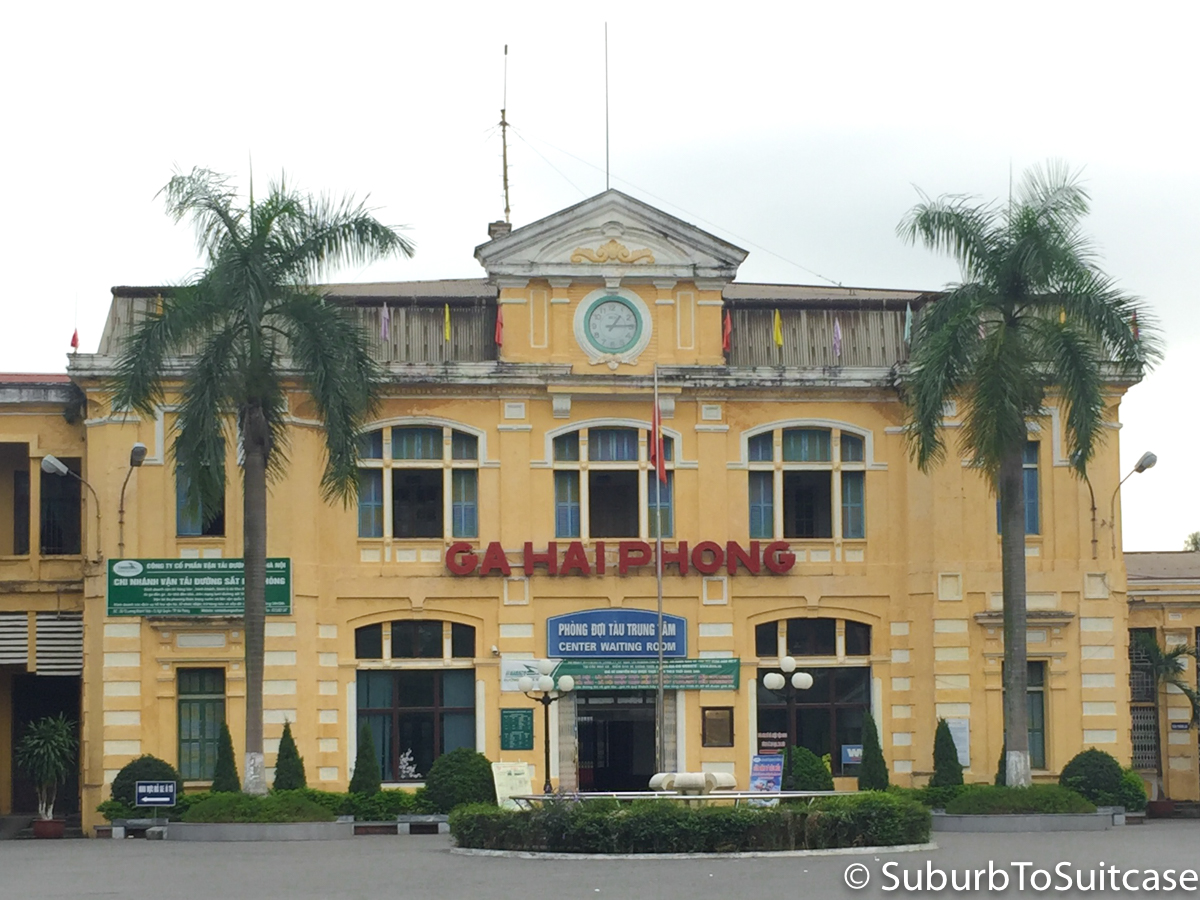
Train station in Haiphong
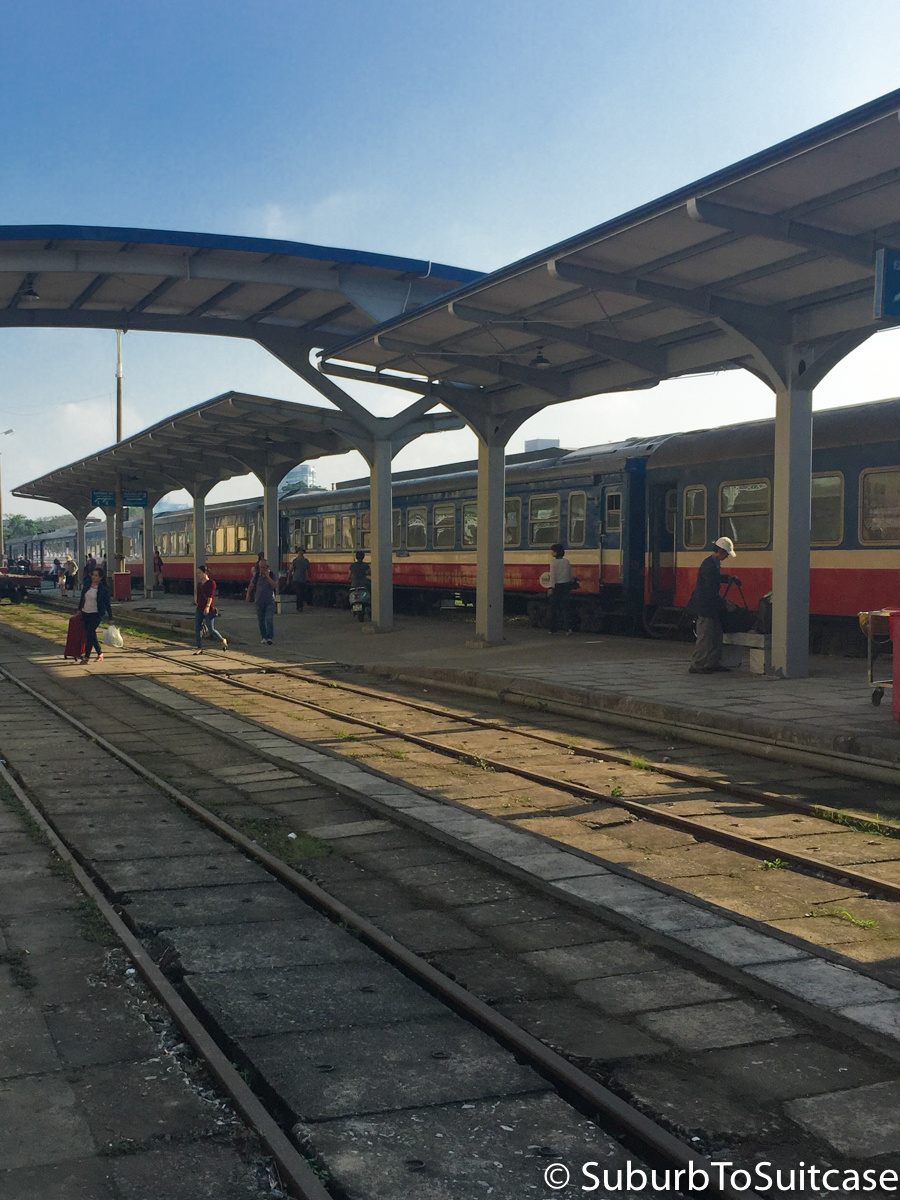
Arriving in Haiphong (everything clears out quickly)

Need a haircut in Haiphong? You just hop off your motorbike when you see the mirror.
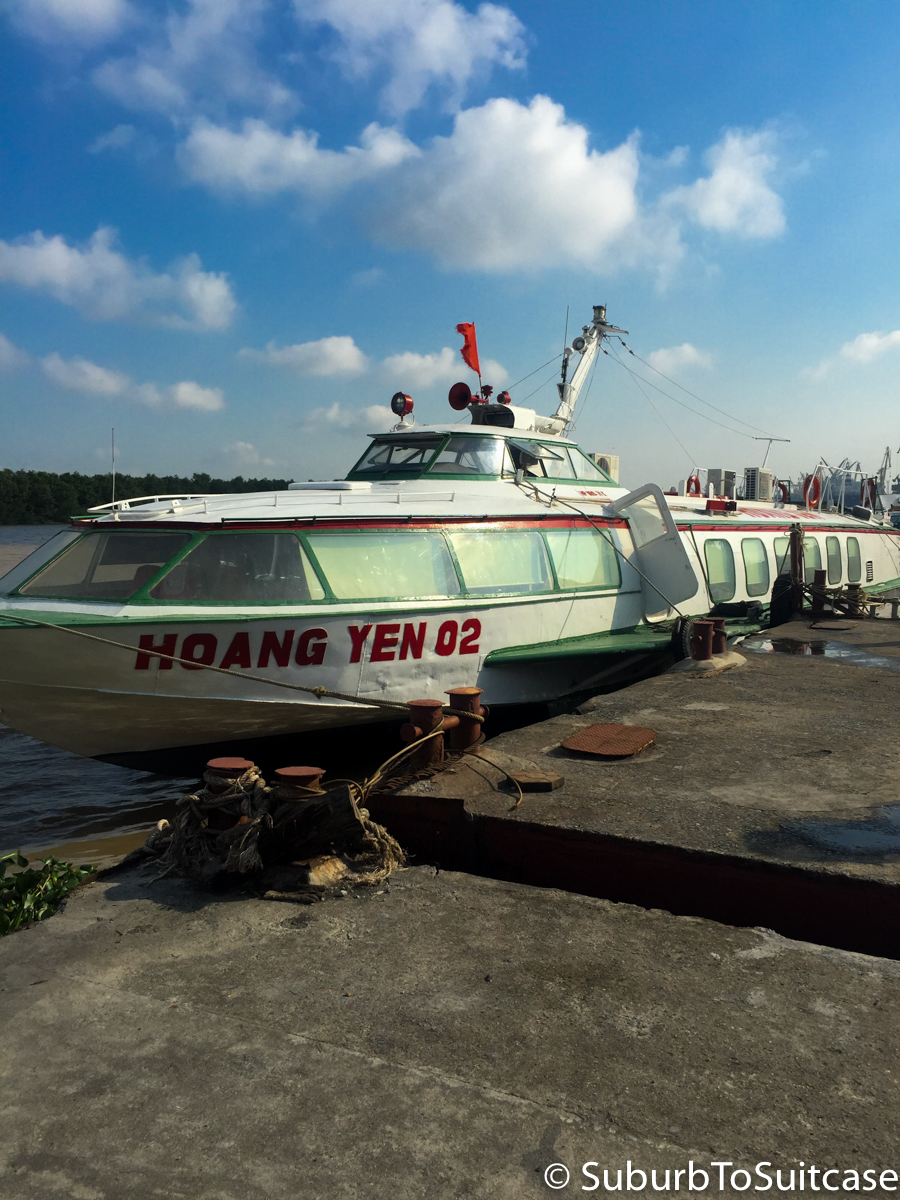
Fastboat hydrofoil to Cat Ba Island
Cat Ba Island
Cat Ba town is where the fastboat will dock from Haiphong. There are a number of restaurants and shops along the main road and also in a few blocks. Locals will tell you there are two ATMs on Cat Ba Island which is true – both are along this main road. There is also a reputable large bank here. When we visited, both ATMs were broken. If you need to get money from the bank from a credit card, be sure you bring your passport for identification.
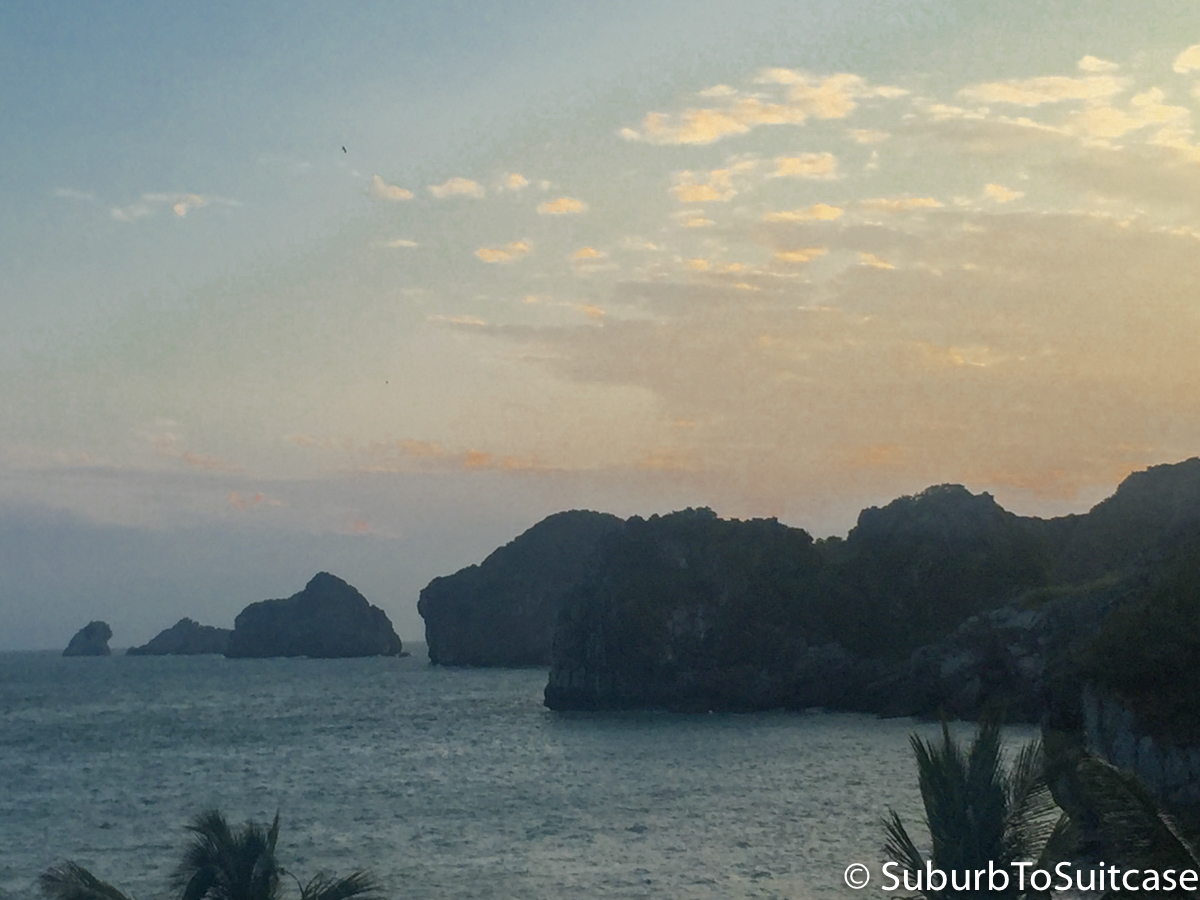
Limestone Rocks Surrounding Cat Ba Island
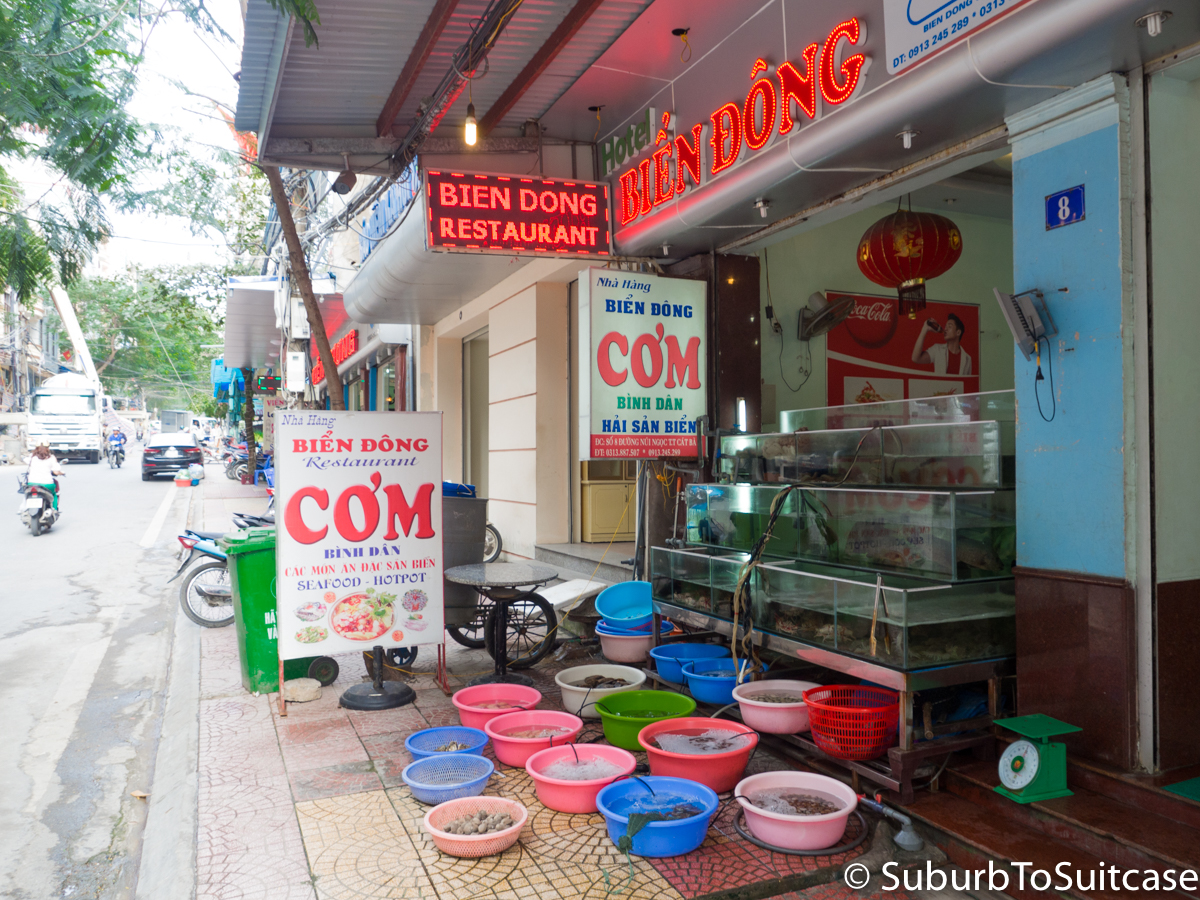
Fresh seafood market in Cat Ba Town – choose your own and they will cook
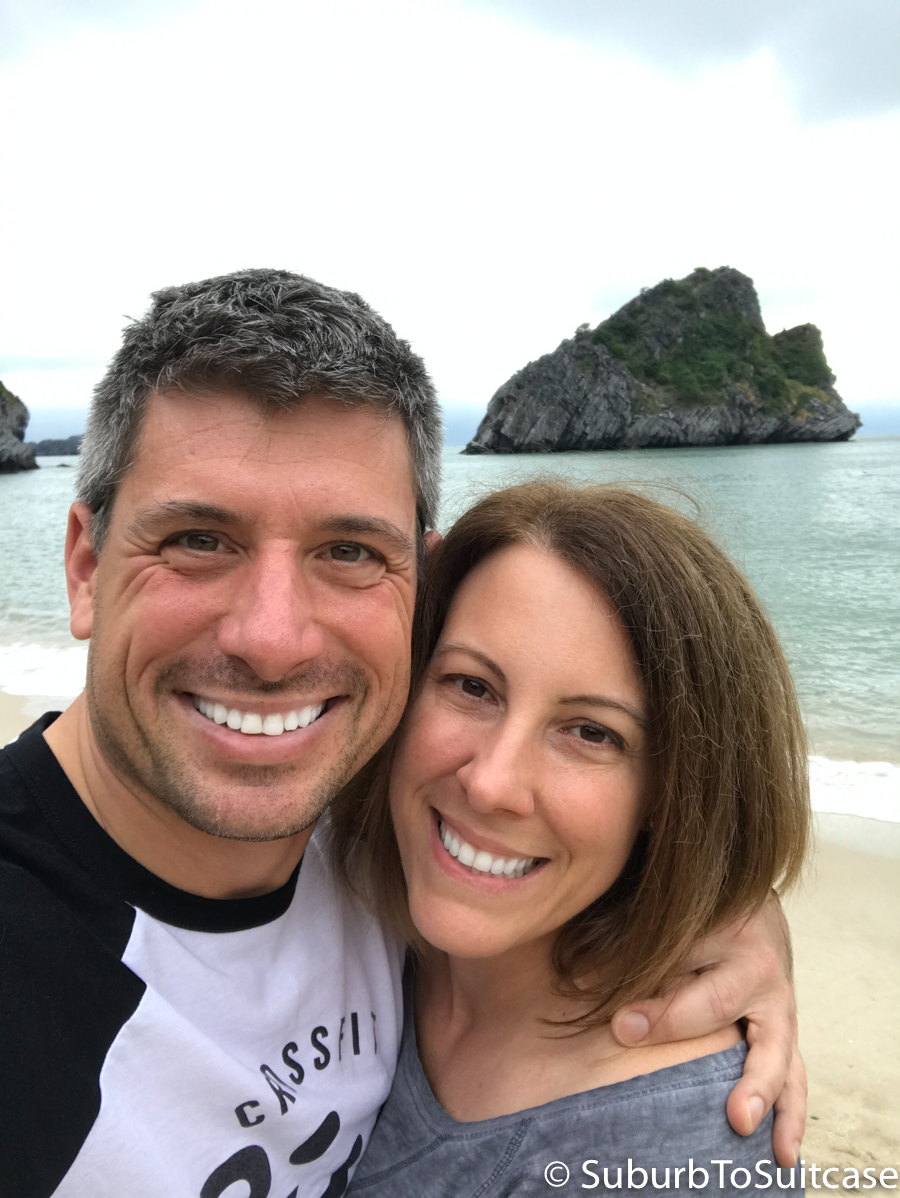
John and I on Cat Ba Island
There are several small shuttle trams (similar to a large golf cart or what you might find at a zoo) that run along the main road – these just go short distances for a set fee. They are simple to hop on and off, but you can also walk around easily. Cat Ba does have a number of hills though, so be prepared in comfortable shoes. In the bay, you can see a variety of fishing boats and fishing rafts. It is impressive to see the diversity and how each navigates the bay – it might be just one person standing and rowing the raft or boat, it might be a few people in a canoe sized raft returning with fish, or it could be a rustic barge coming in from the floating villages.
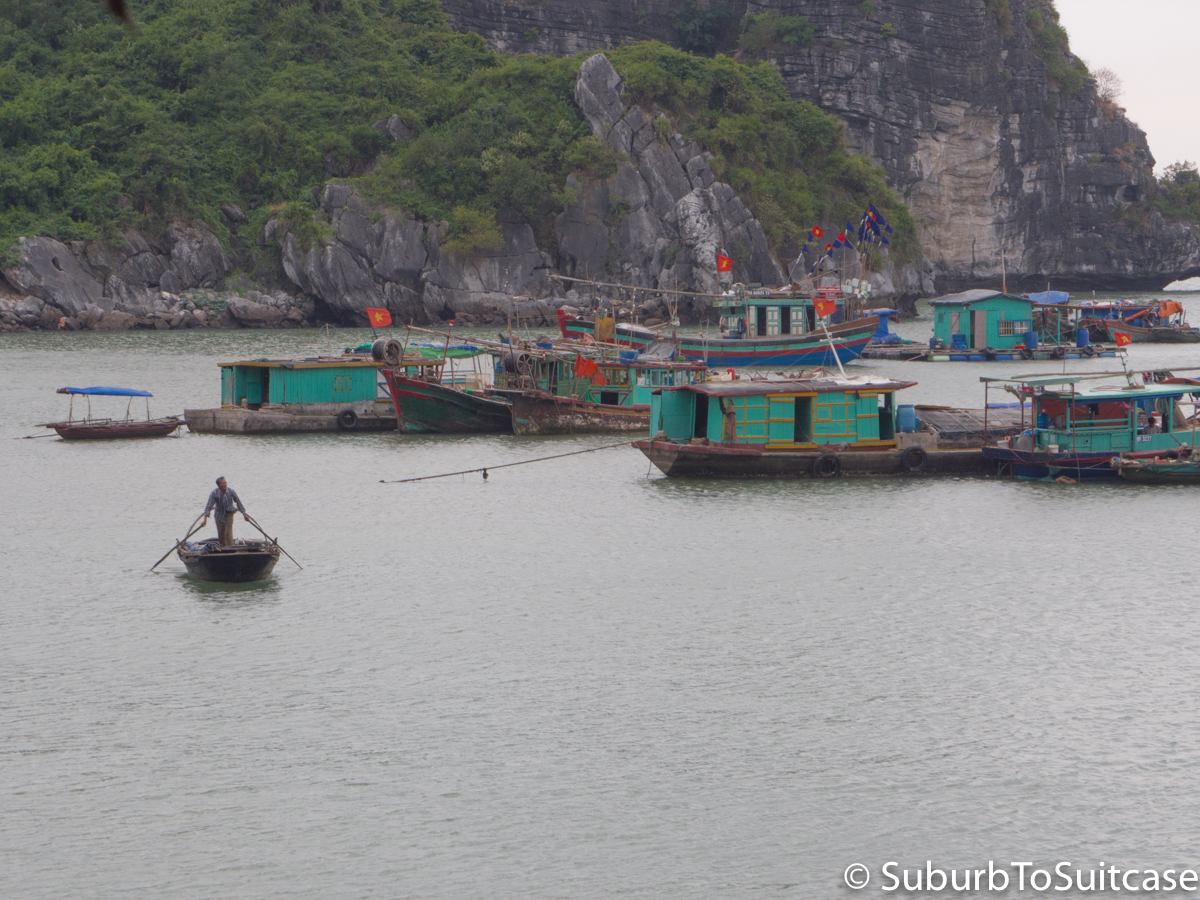
A man rows his boat through the bay whilst standing up.
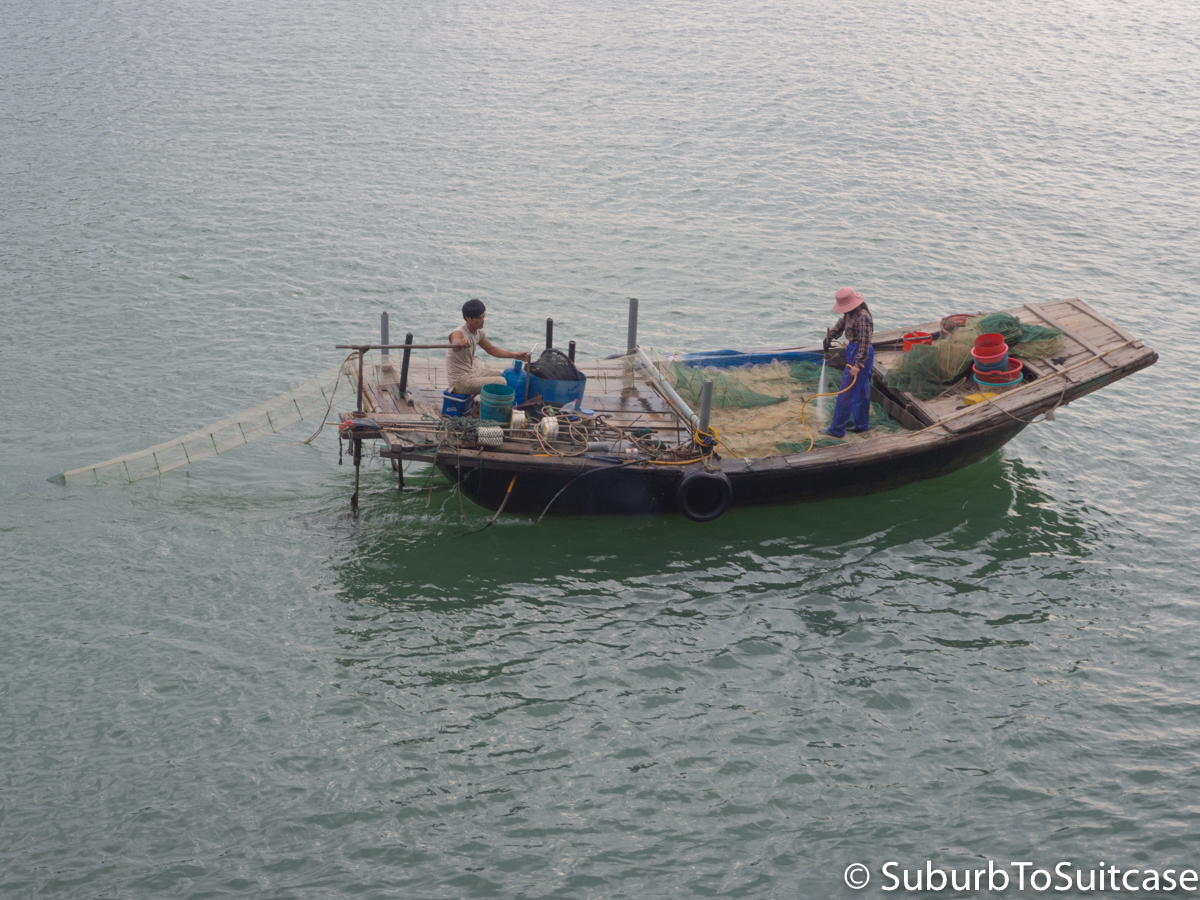
A couple cleans fishing nets while setting out more crate-style lines behind the boat – these will be marked with buoys for retrieval later.
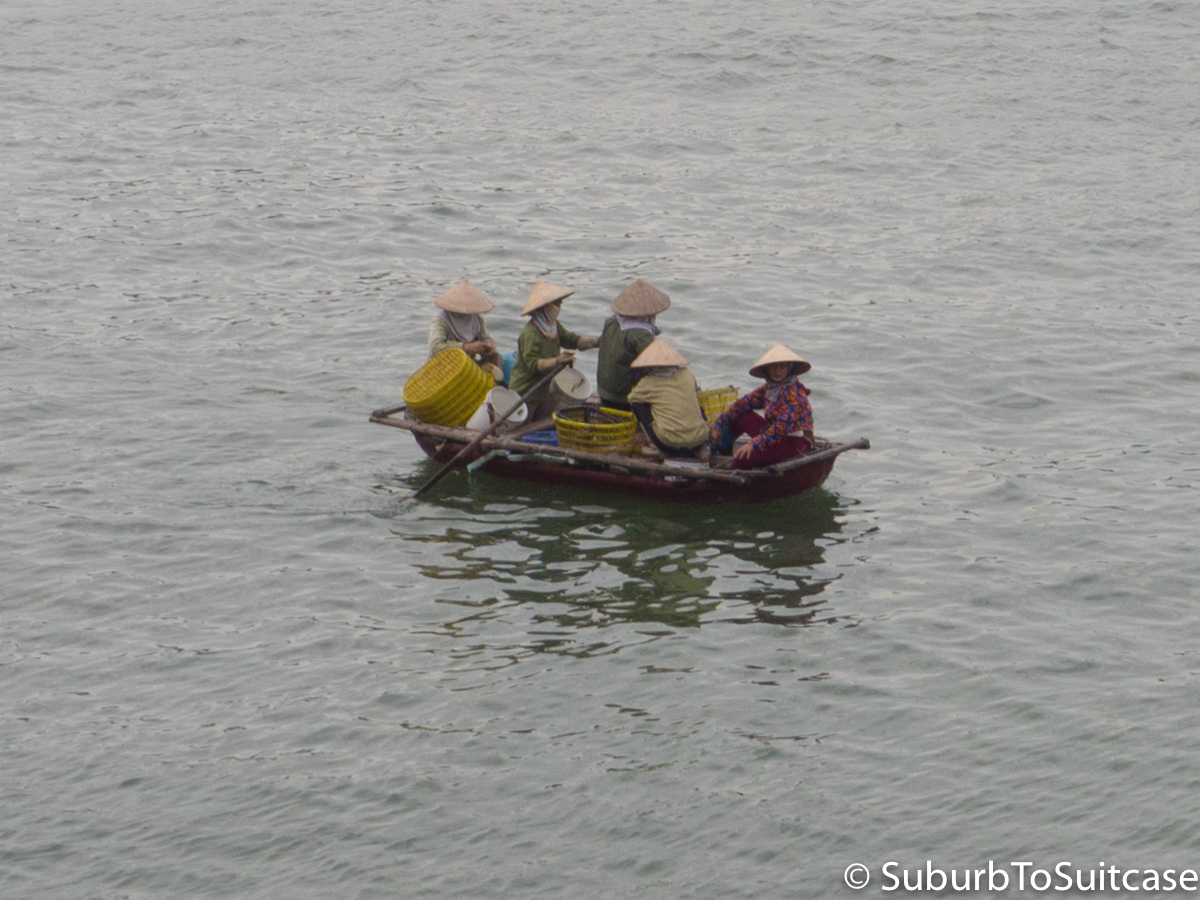
No space is wasted in the raft – these ladies are rowing their boat into shore with buckets of fish
Most tourists find their way to Halong Bay to see the limestone rock formations. We chose Cat Ba instead because we wanted more culture and less tourism. Rather than finding a tour to Halong Bay which we had heard was overrun with packed tour boats and noise, we hired a local fisherman to take us out on his small boat to Lan Ha Bay which has the same limestone rocks but where we could also see the floating fishing villages. He let us dock where we could borrow kayaks to take into the narrow waterways for a more intimate experience. We were able to see the floating live wells up close and we never saw another tourist.
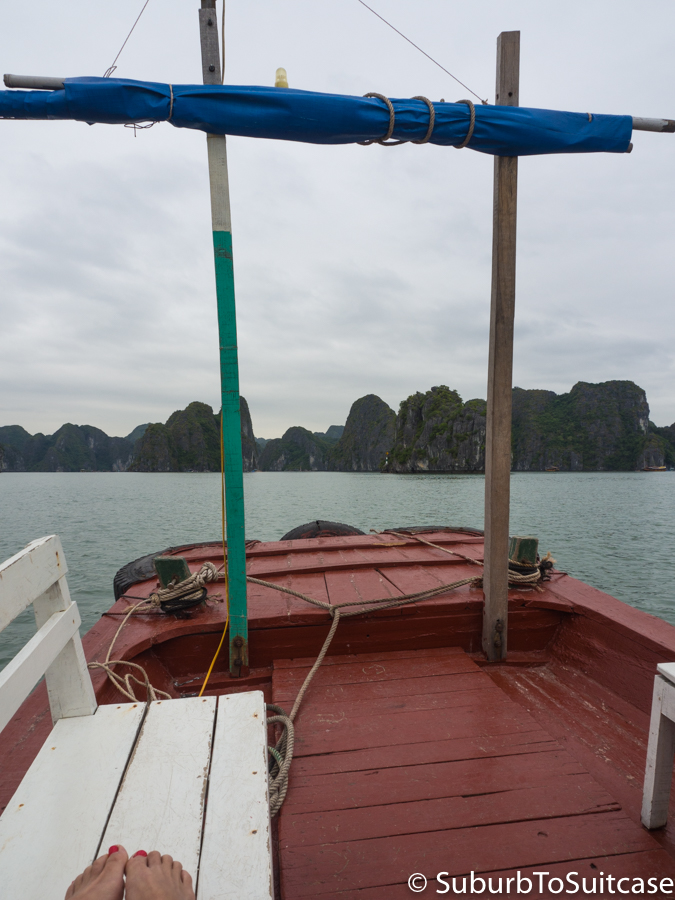
Our “tour boat” to Lan Ha Bay
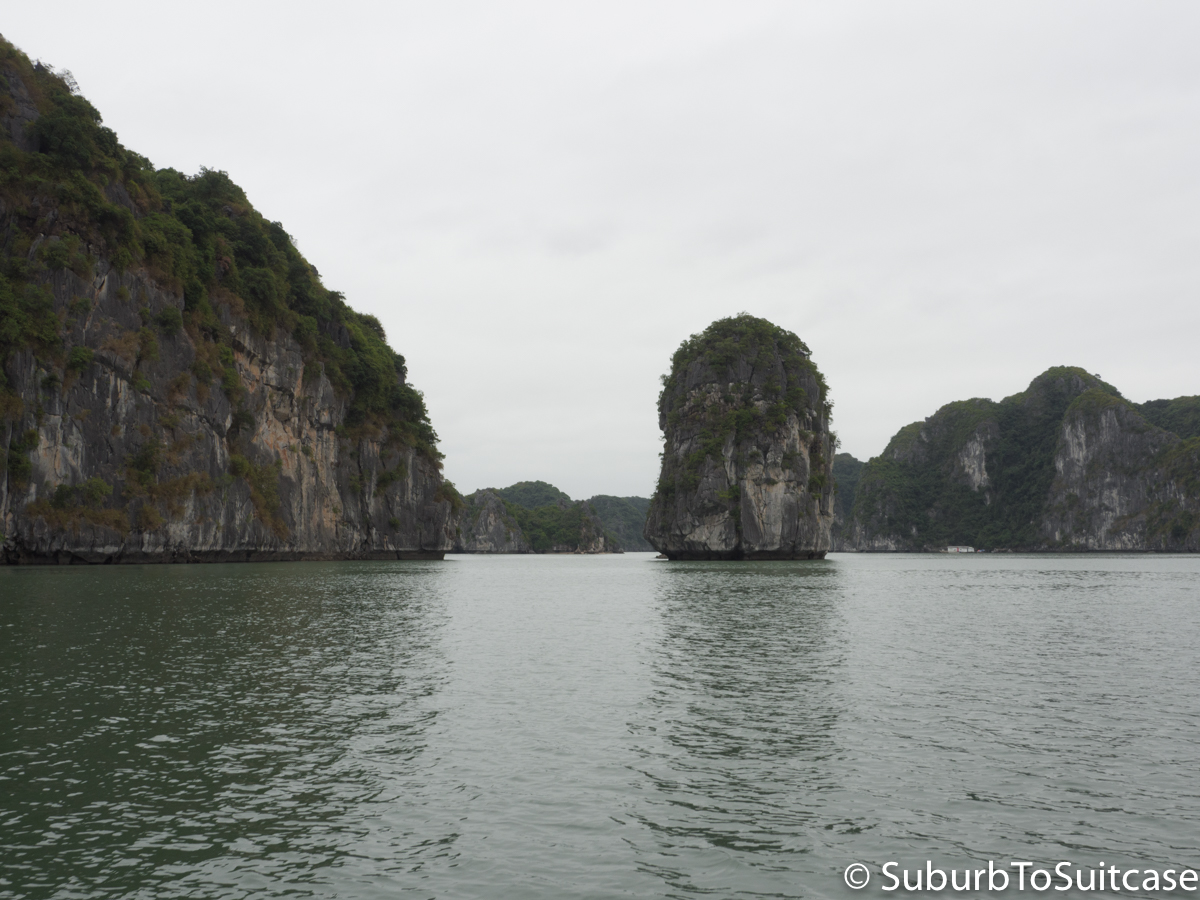
Lan Ha Bay’s limestone rocks
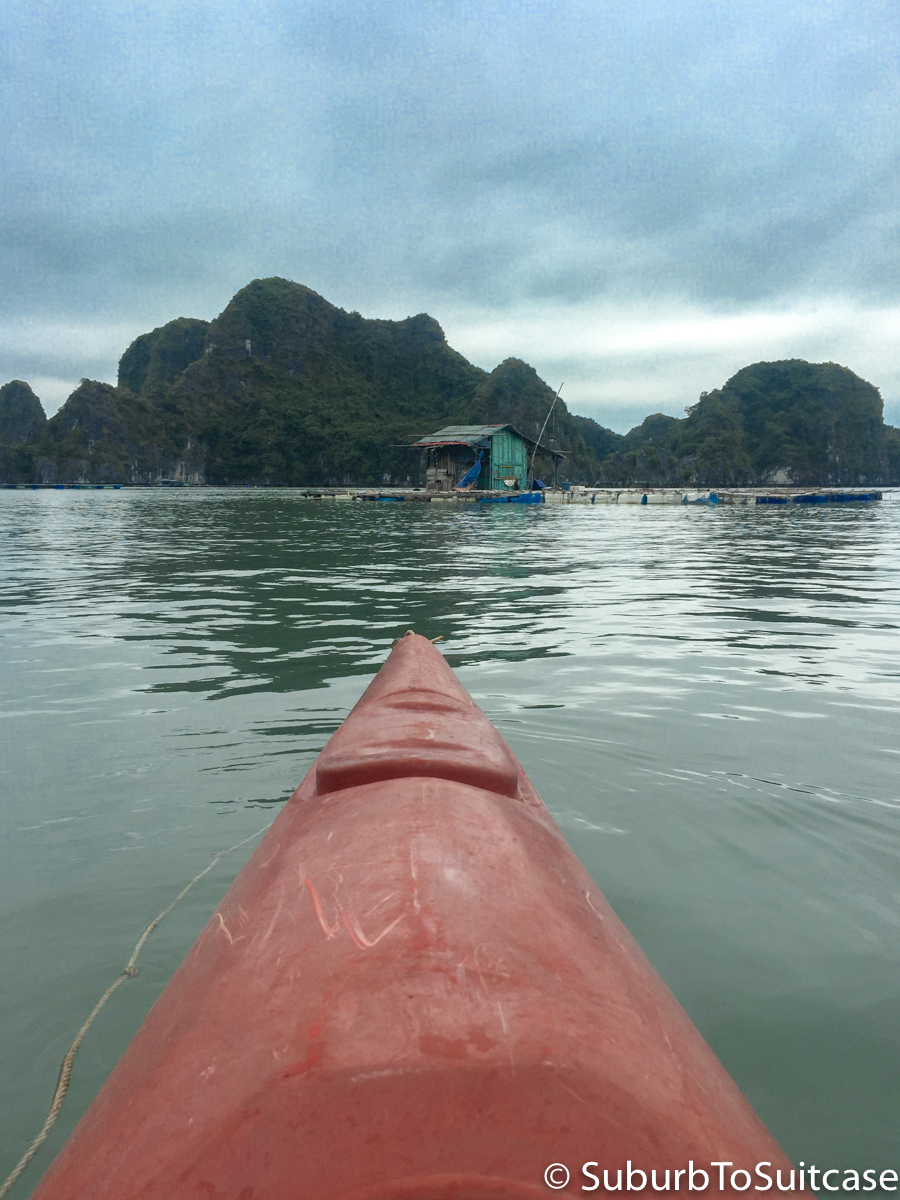
Kayaking through Lan Ha Bay
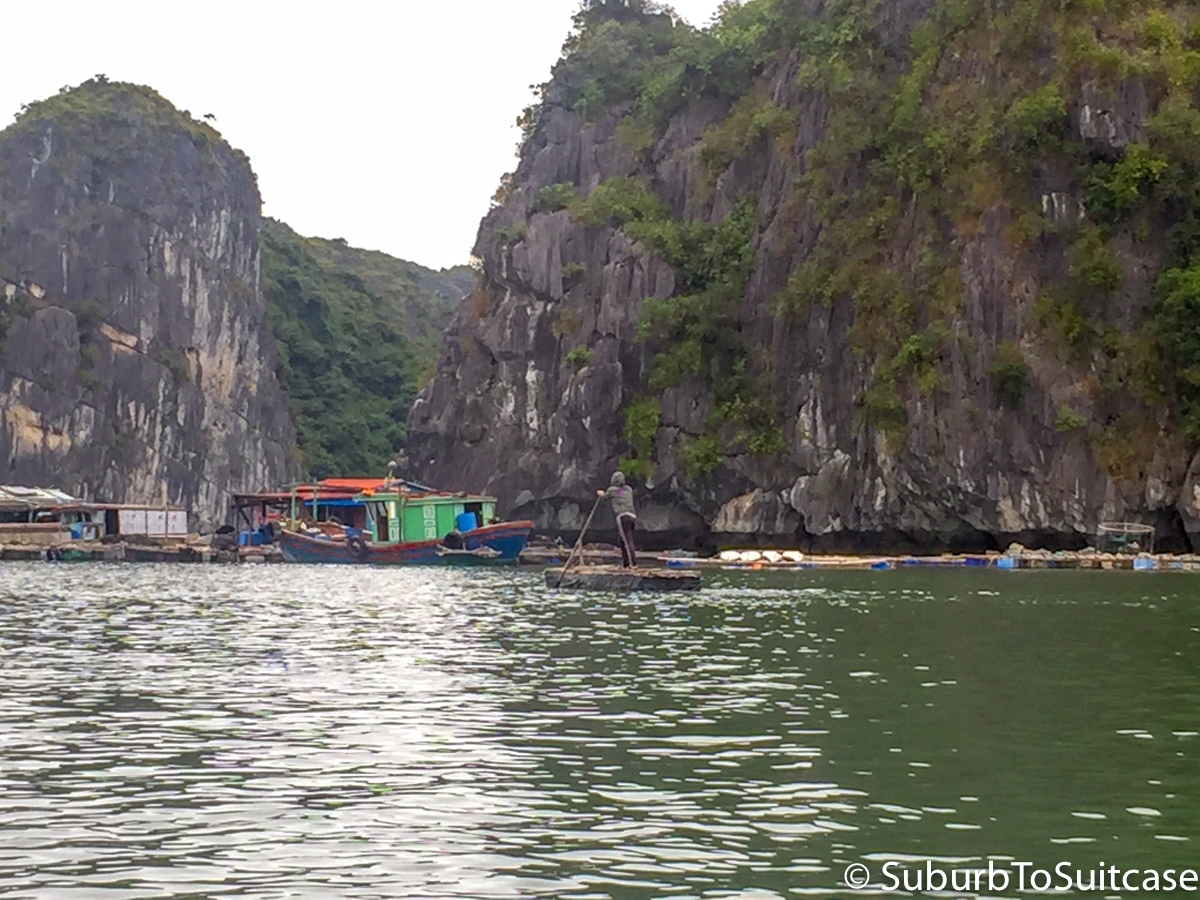
Floating Fishing Village
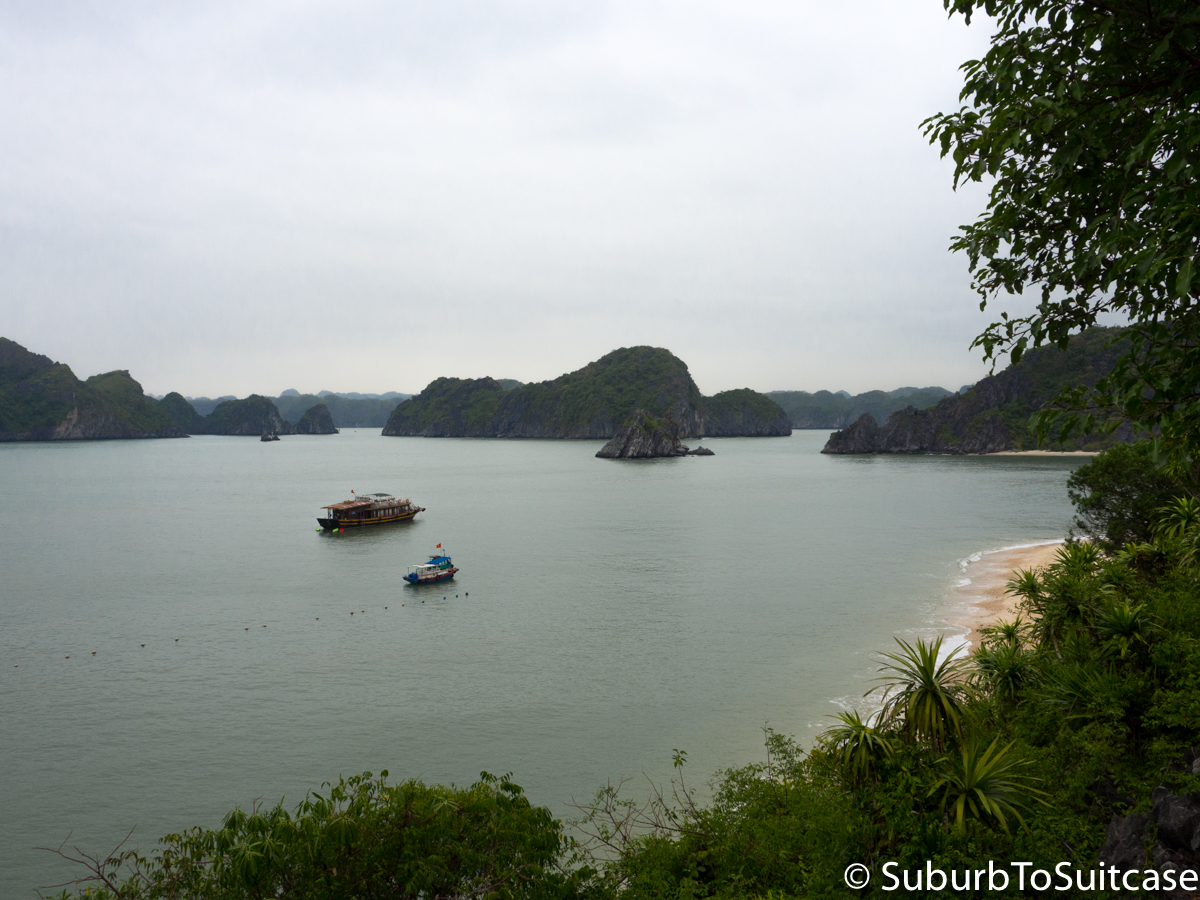
We stopped at Monkey Island to take in the view after a climb.
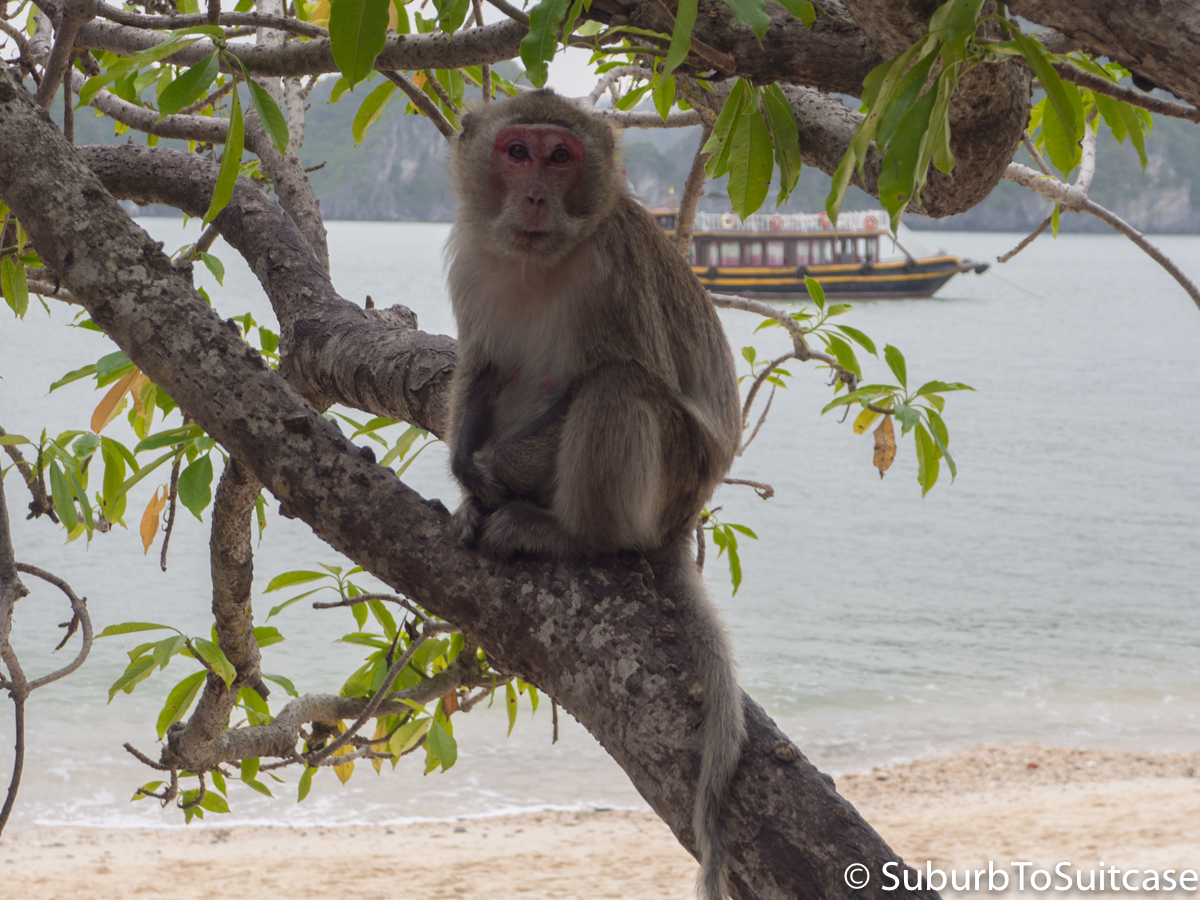
The one monkey we found on Monkey Island
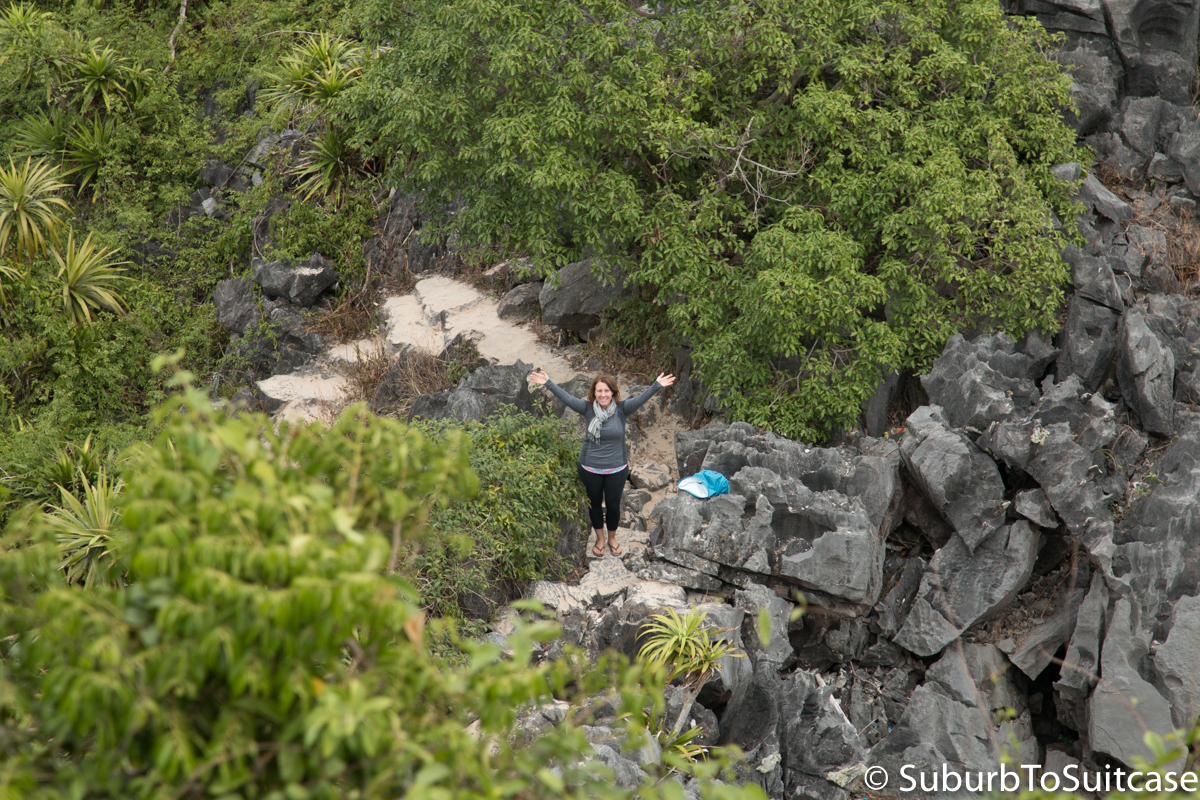
I didn’t exactly have proper footwear for a hike up the rock, so I had to John climb the last part solo.
Phong Nha
After departing Cat Ba and making our way back to mainland Vietnam, we set out to Phong Nha Kebang by way to Dong Hoi. This travel route involved a ferry, train, plane and taxi. It was all worth it though. Our destination of choice was a local farmstay in the country where we borrowed bicycles to pedal into town. This was quite the experience because the very narrow road is shared by pedestrians, cattle, snakes, chickens, water buffalo and motorized vehicles. In Phong Nha, agriculture includes working water buffalo for the fields. It was like a step back in time compared to what we had experienced in Hanoi.
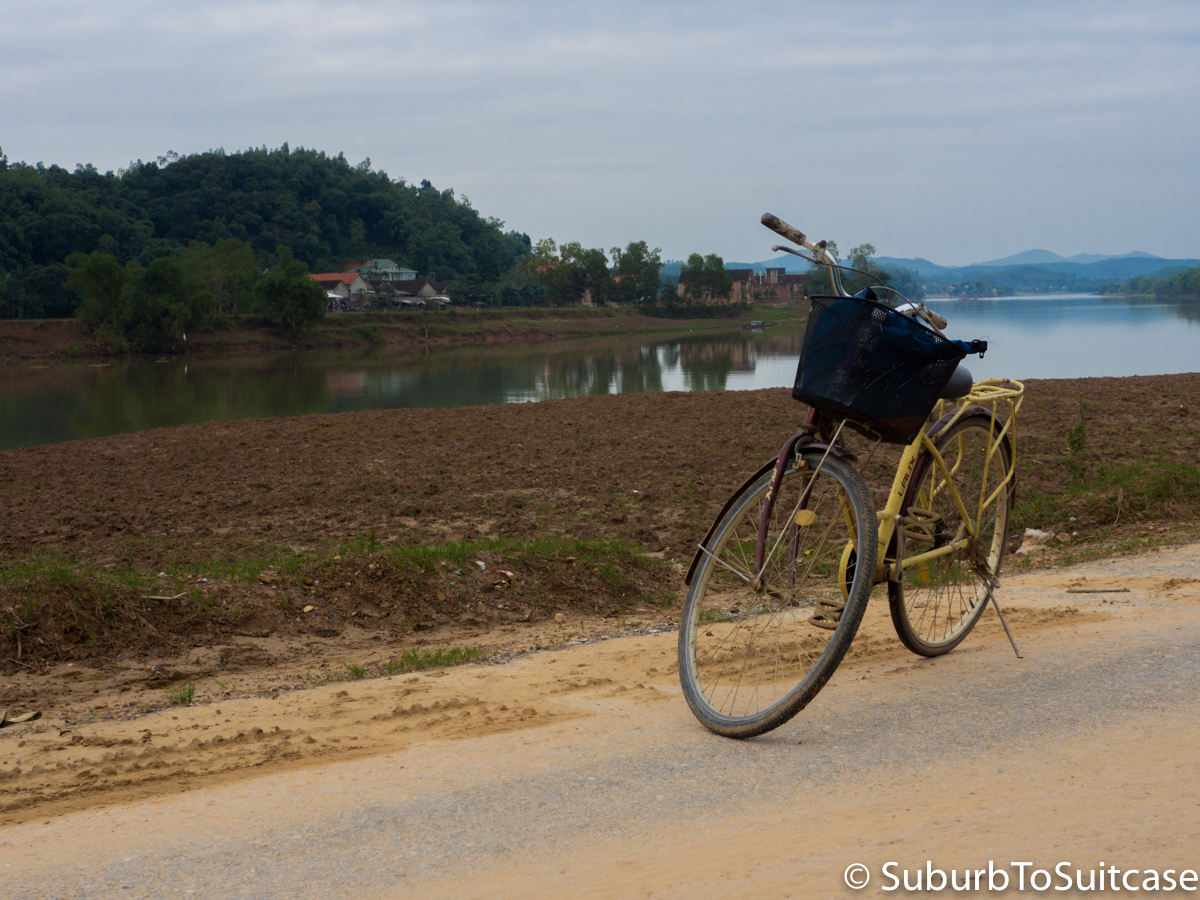
My bicycle around Phong Nha
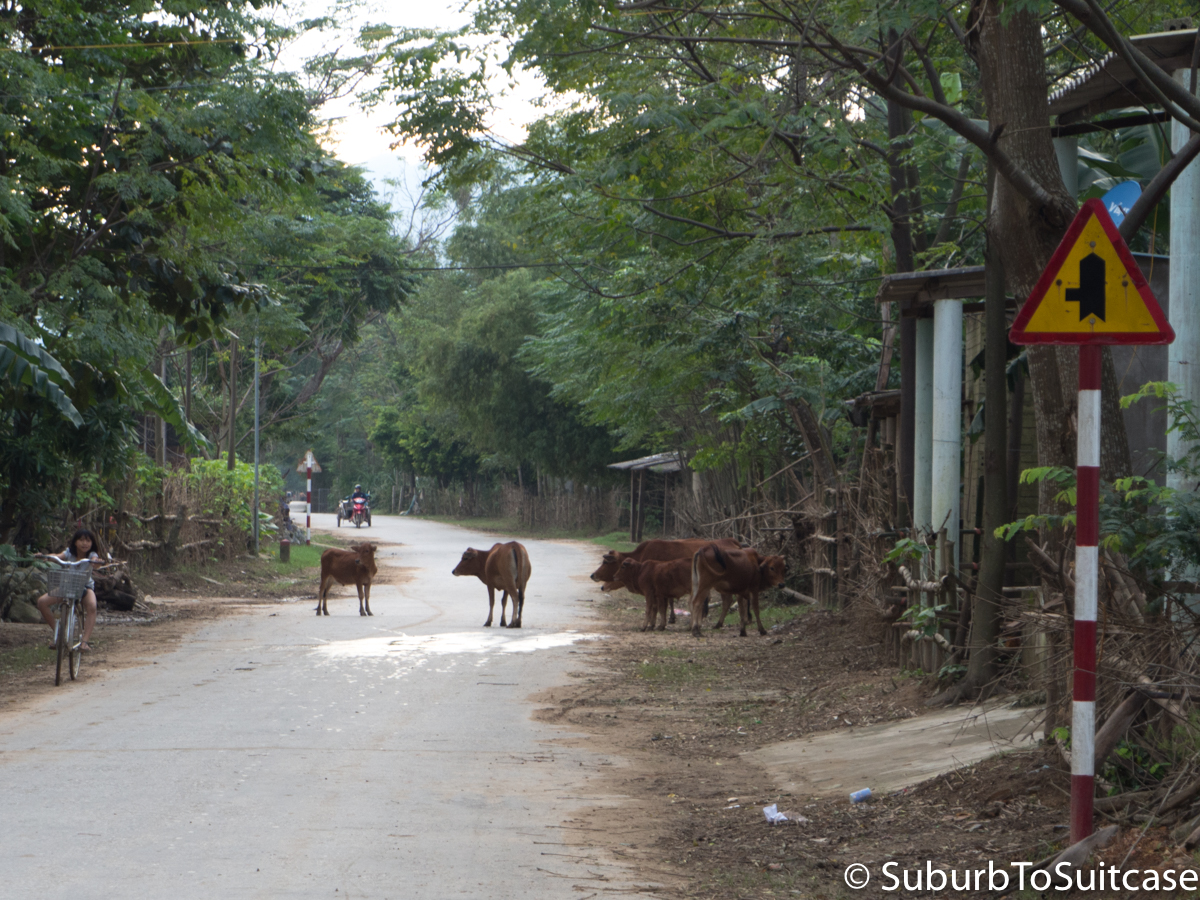
Rush hour in Phong Nha
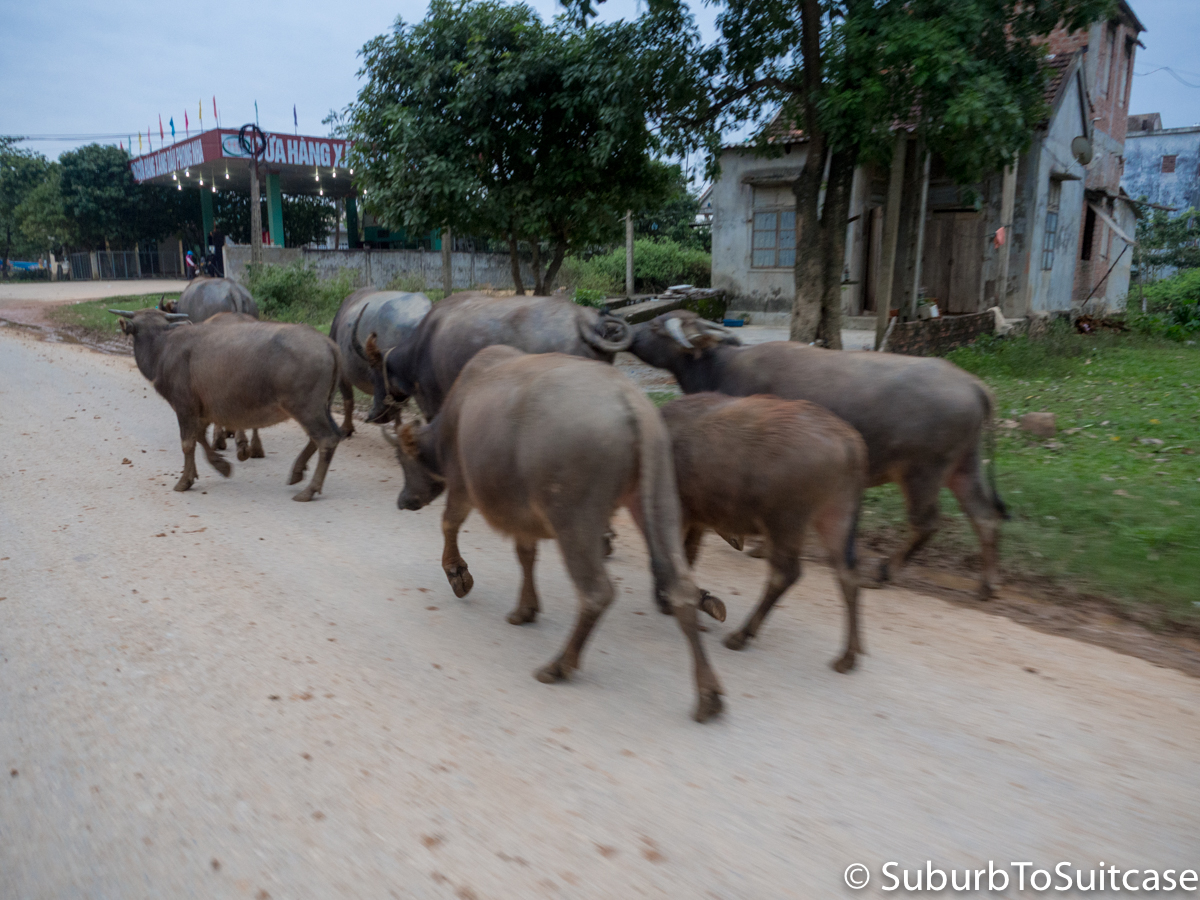
As it turns out, water buffalo do not use turn signals. This is the quality of photo you get when pedaling to navigate a shifting herd.
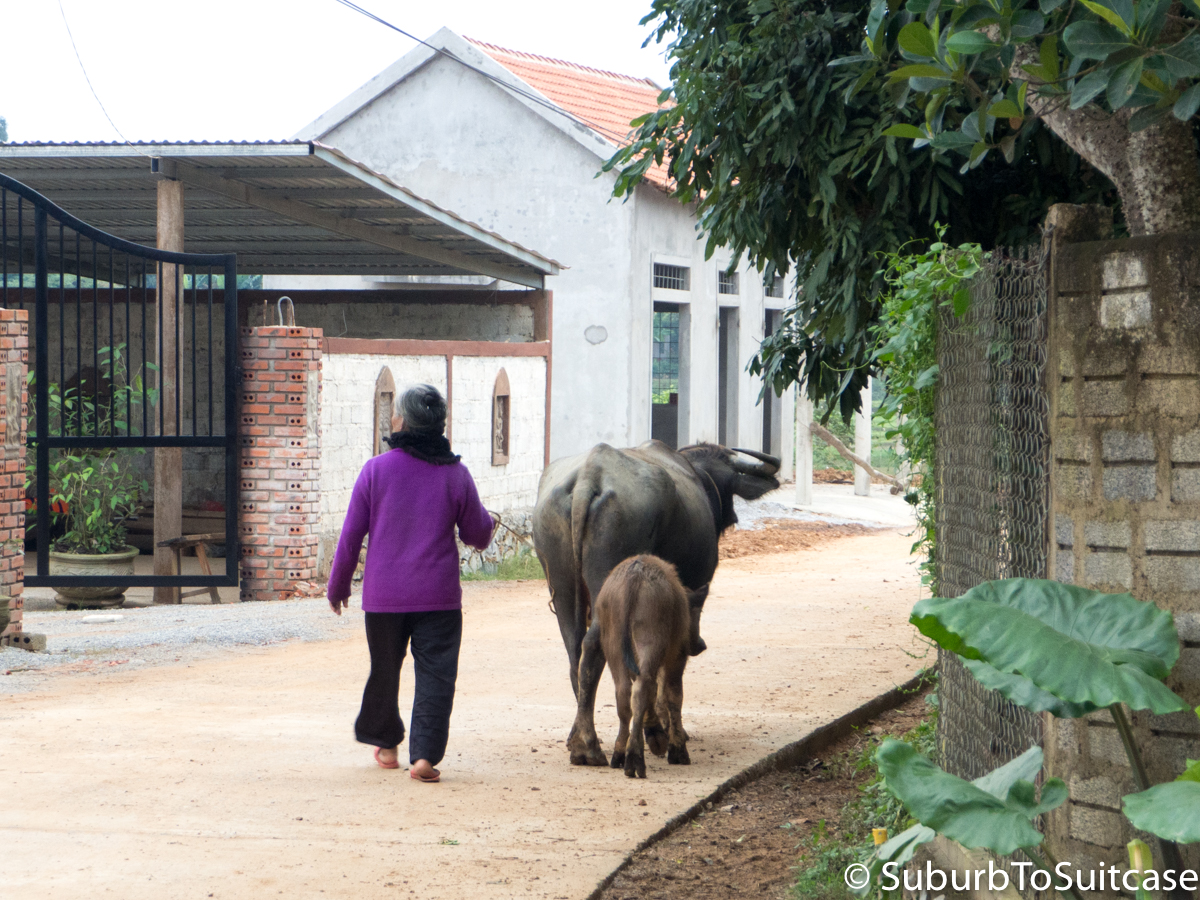
Farmers of all shapes and sizes collect their herd in the evenings. It is not uncommon to see them walking casually down the path. This water buffalo has its baby along for the walk too.
The reason we came to Phong Nha was to experience the recently discovered cave system in Phong Nha-Ke Bang national park which is also a UNESCO world heritage site. We opted for a two day, one night expedition to explore Hang Tien cave – weather and season dictate which parts of the caves can be explored at certain times, primarily due to water levels and risk of river crossing. There is only one tour operator licensed to take people into the caves and the Vietnamese government strictly enforces constraints around ecotourism. Before you can see the cave, you need to make it through an intense jungle trek. Hikers are reminded not to touch foliage because some greens have thorns or poisonous leaves…and because some vines are not vines at all (they are snakes). All in all, it was a great experience – very intense but so worth it!
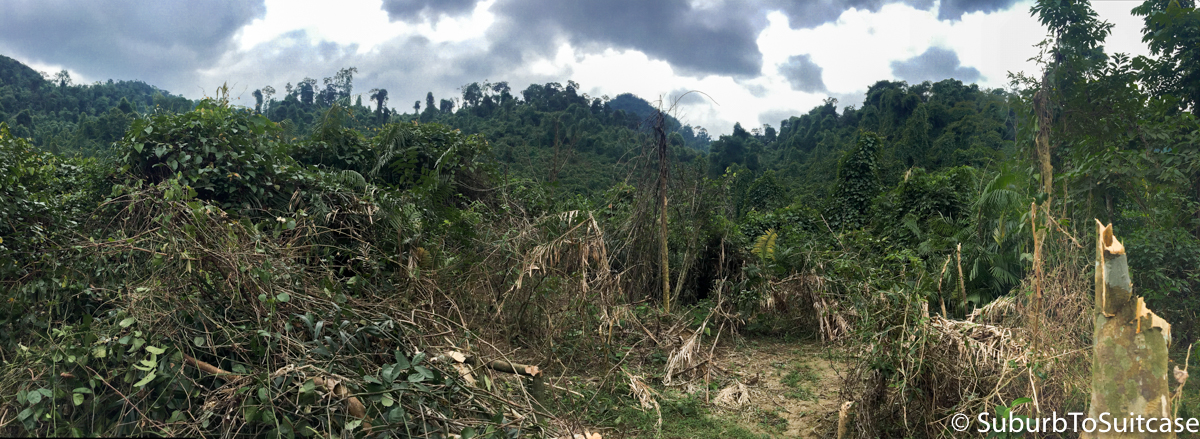
A panoramic photo deep in the jungle before we made the last push toward base camp where we would sleep.
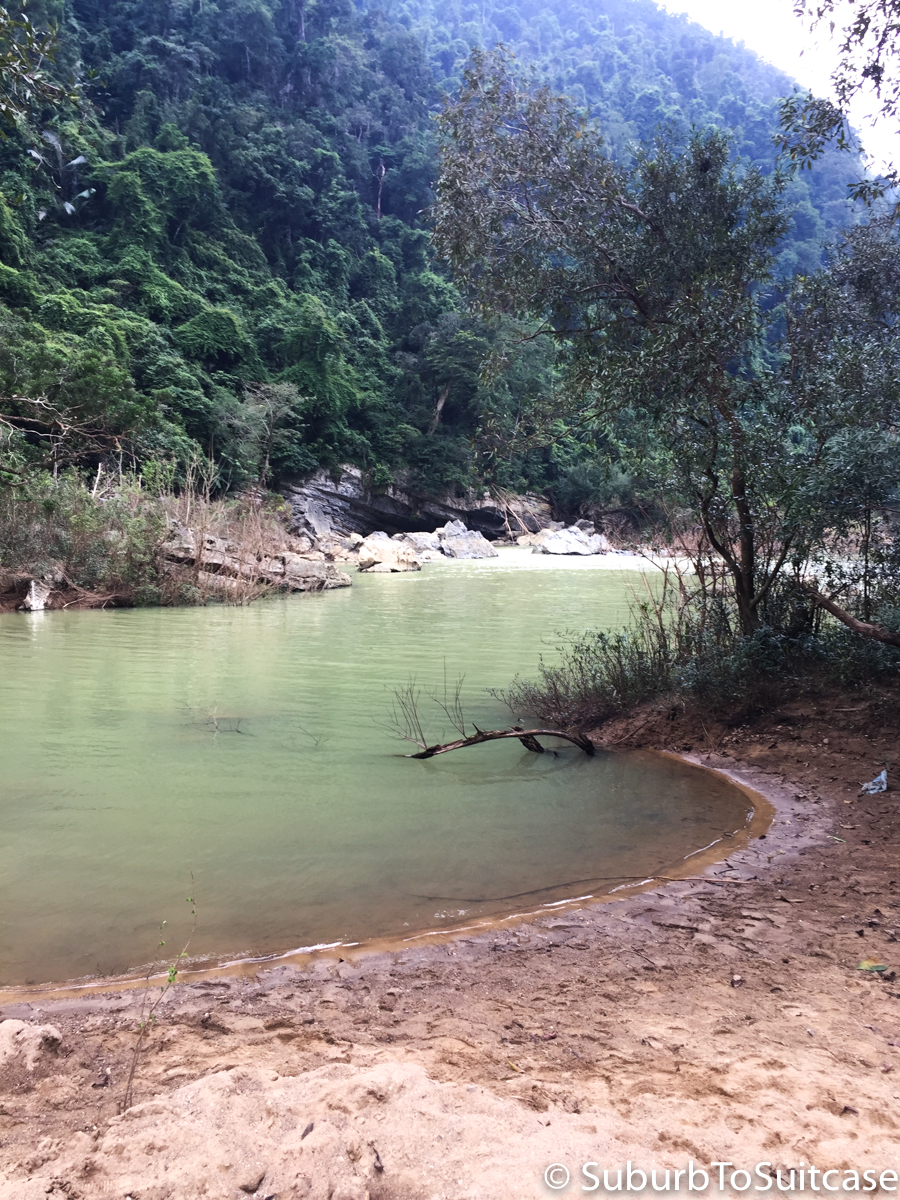
We slept in tents next to the river – not an ideal place for me to get a migraine.
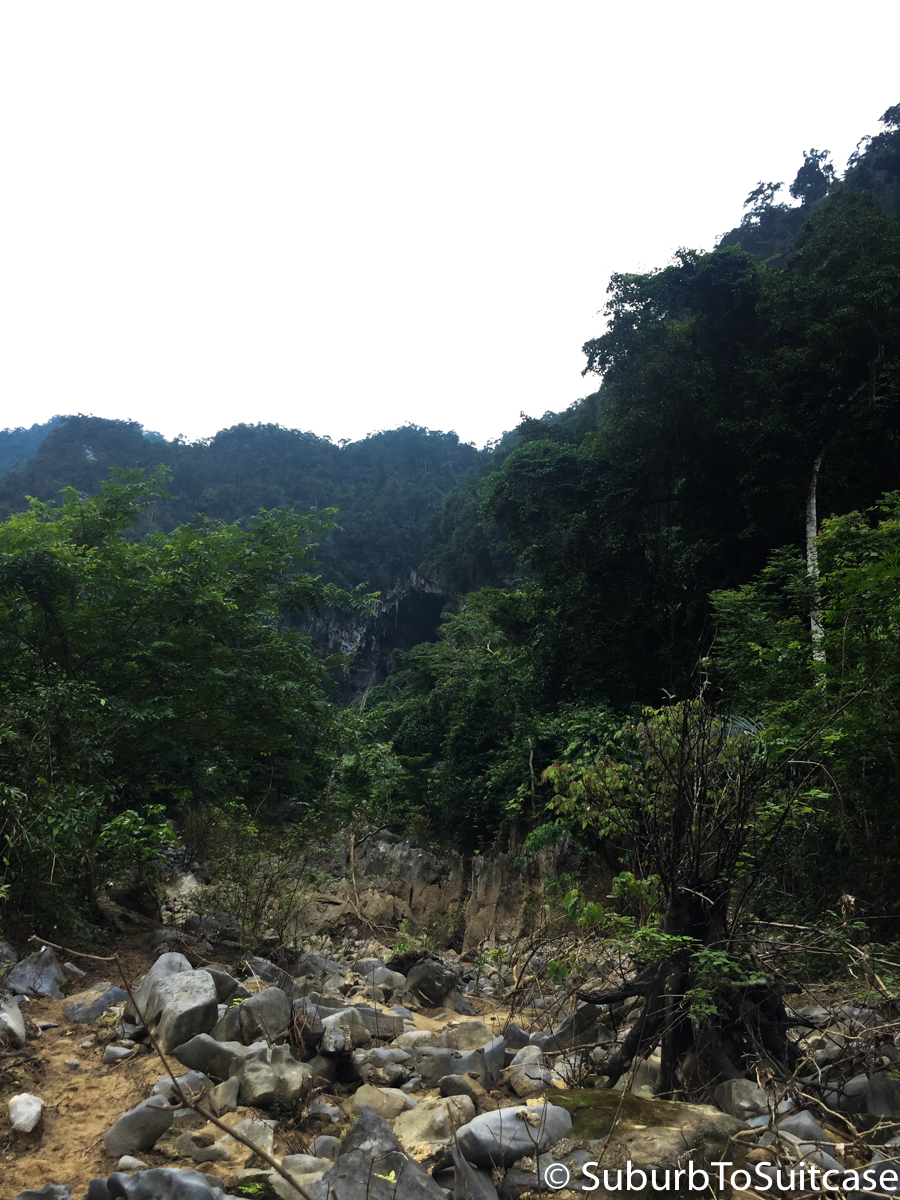
To get from camp to the cave entrance, you need to climb over some rocks. This is a taste of what is to come.
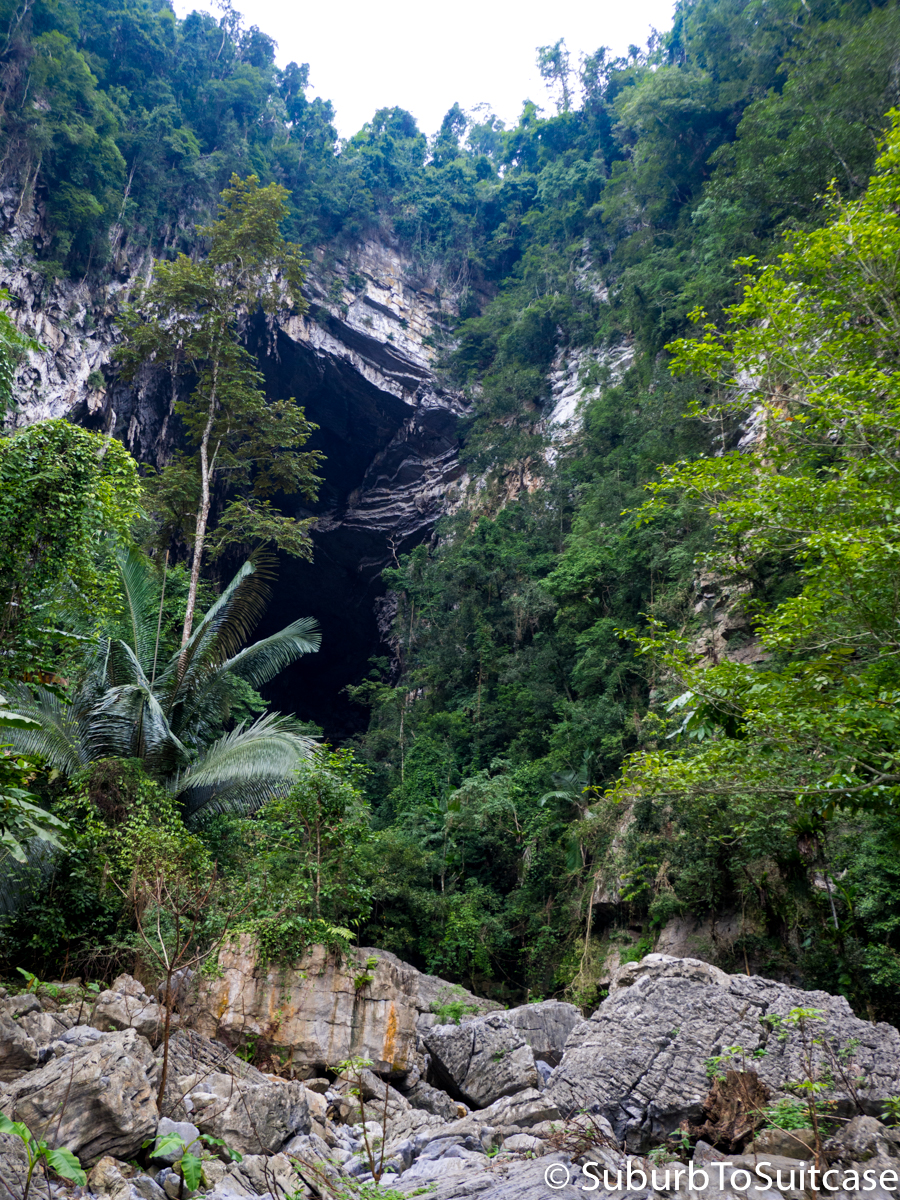
Some of the large boulders to get up and over before exploring the cave
Headlamps are needed inside the cave. It really is impressive to see how the water and elements have created the cave. There are portions with very large passages and some with narrow crevices. There are pools of water that require swim-throughs as well so prepare to get muddy and wet.
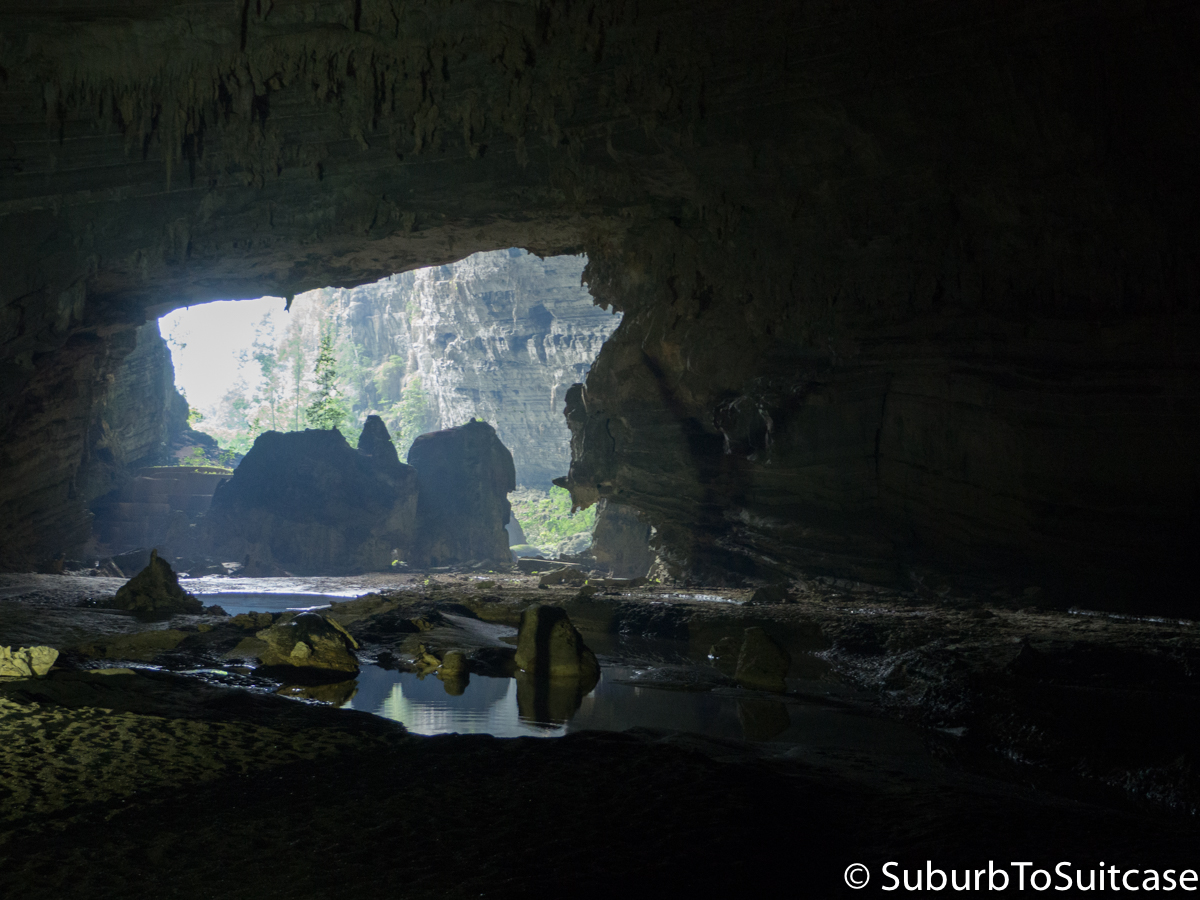
Just inside Hang Tien cave looking out
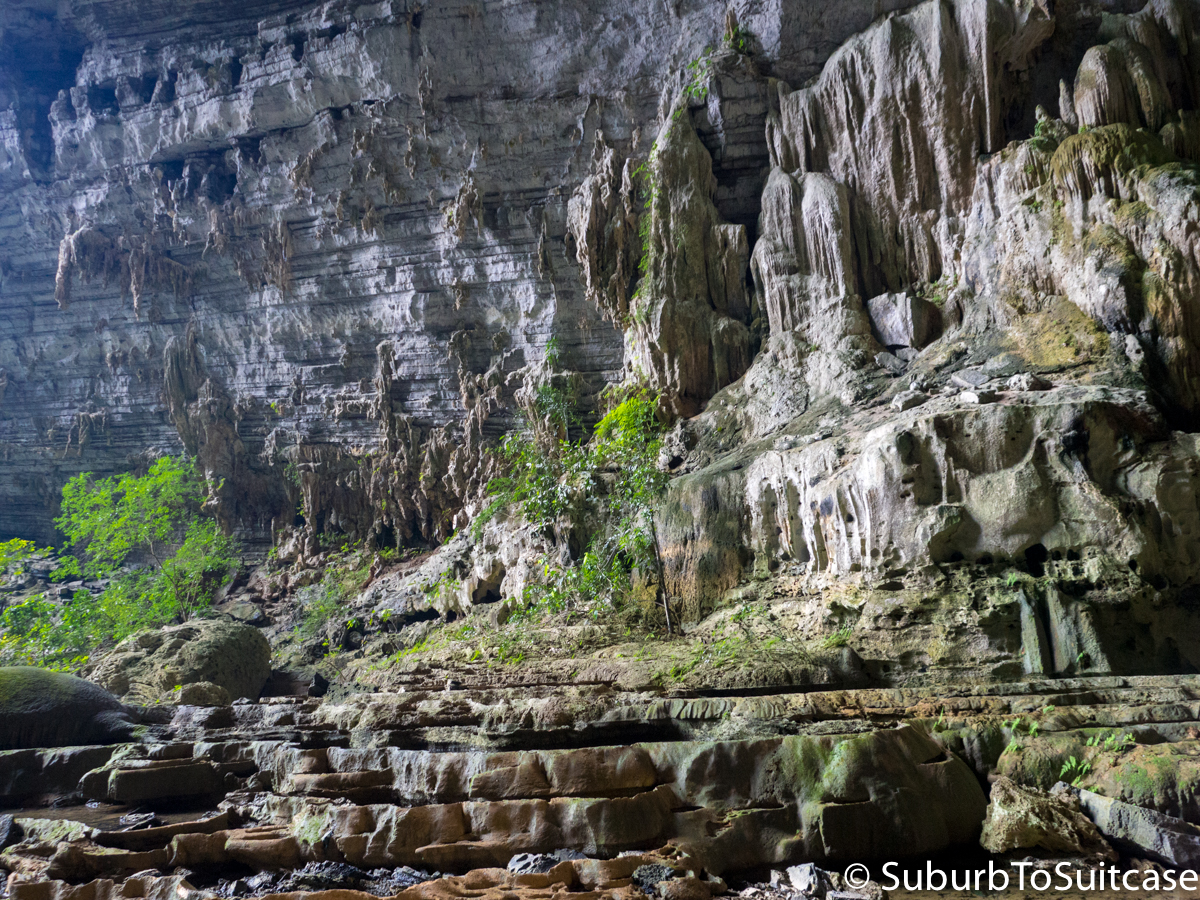
A small amount of greenery and moss grows toward the entrance because of the moisture and water settling in small pools.
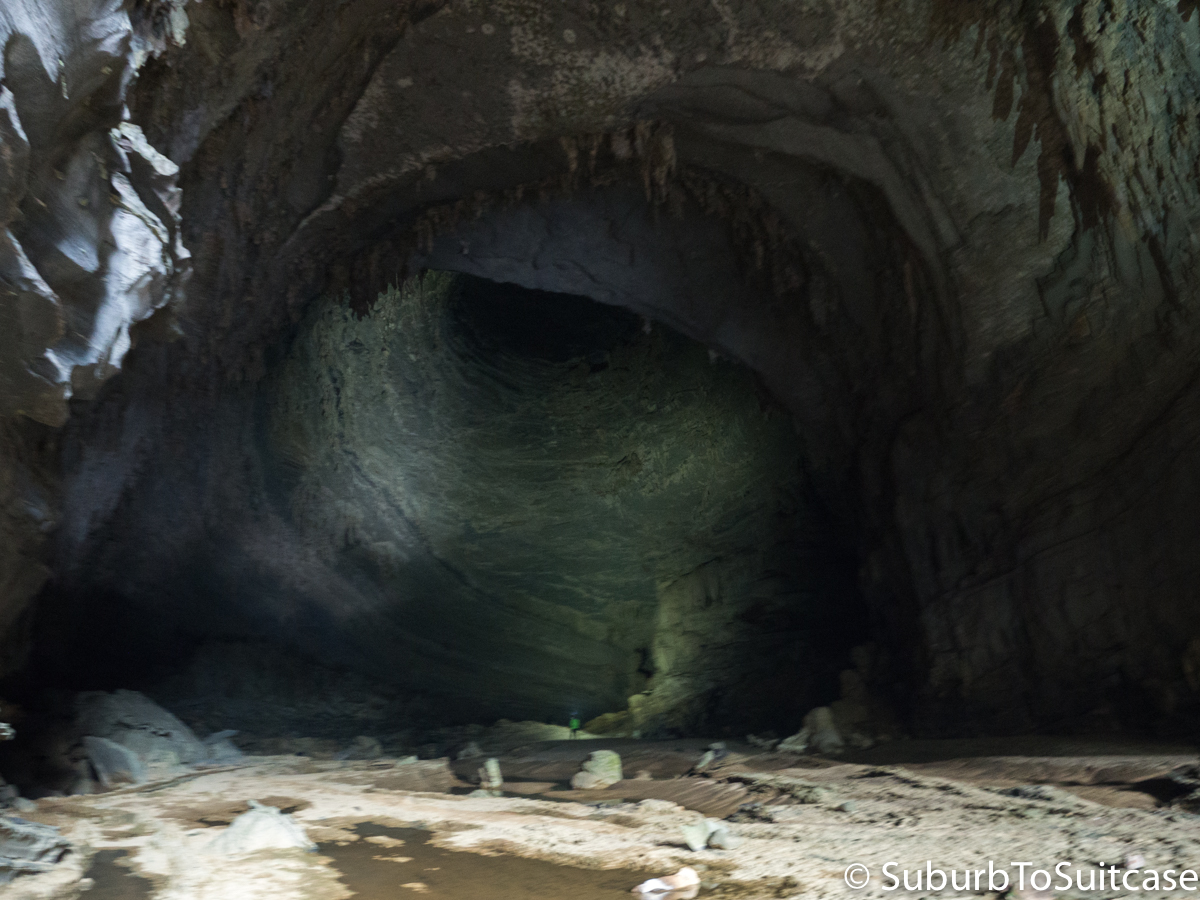
Cave formation
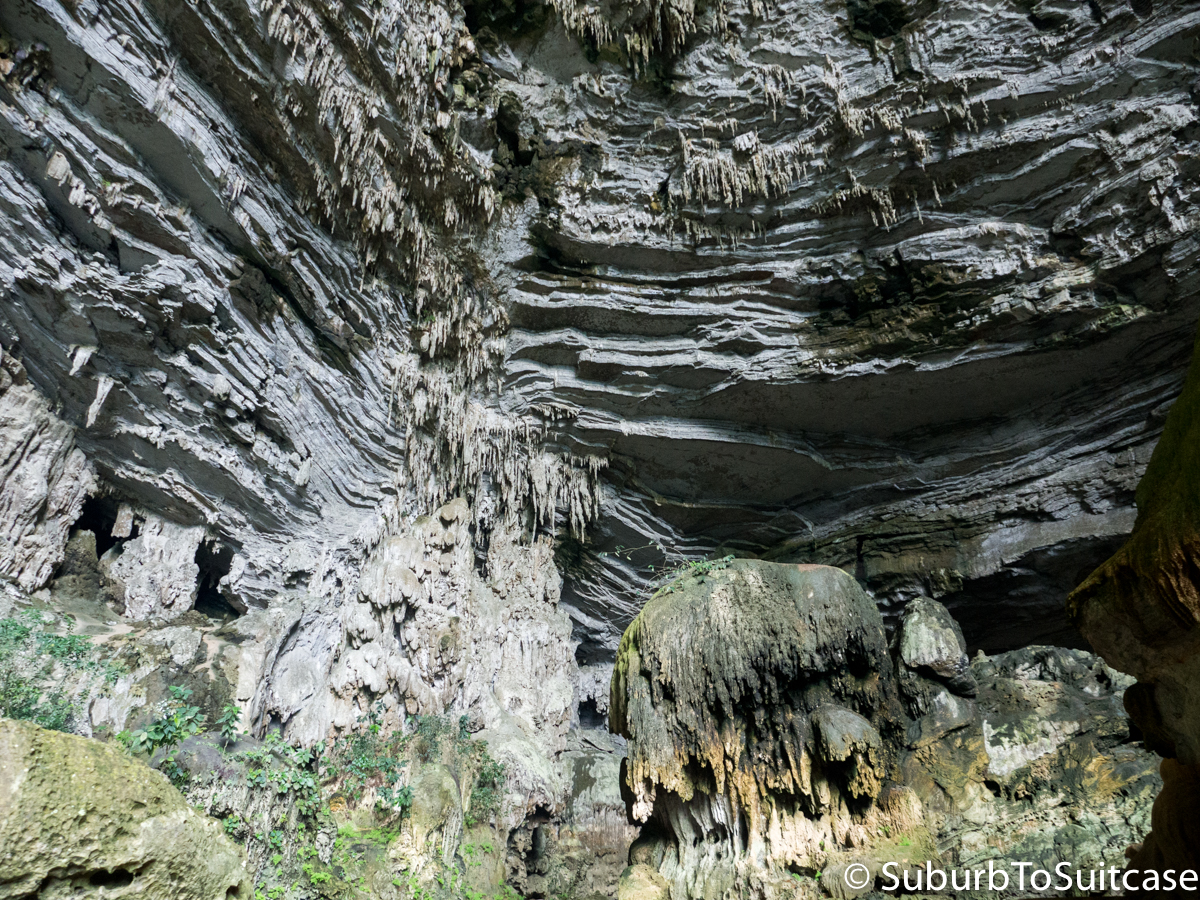
Cave formations
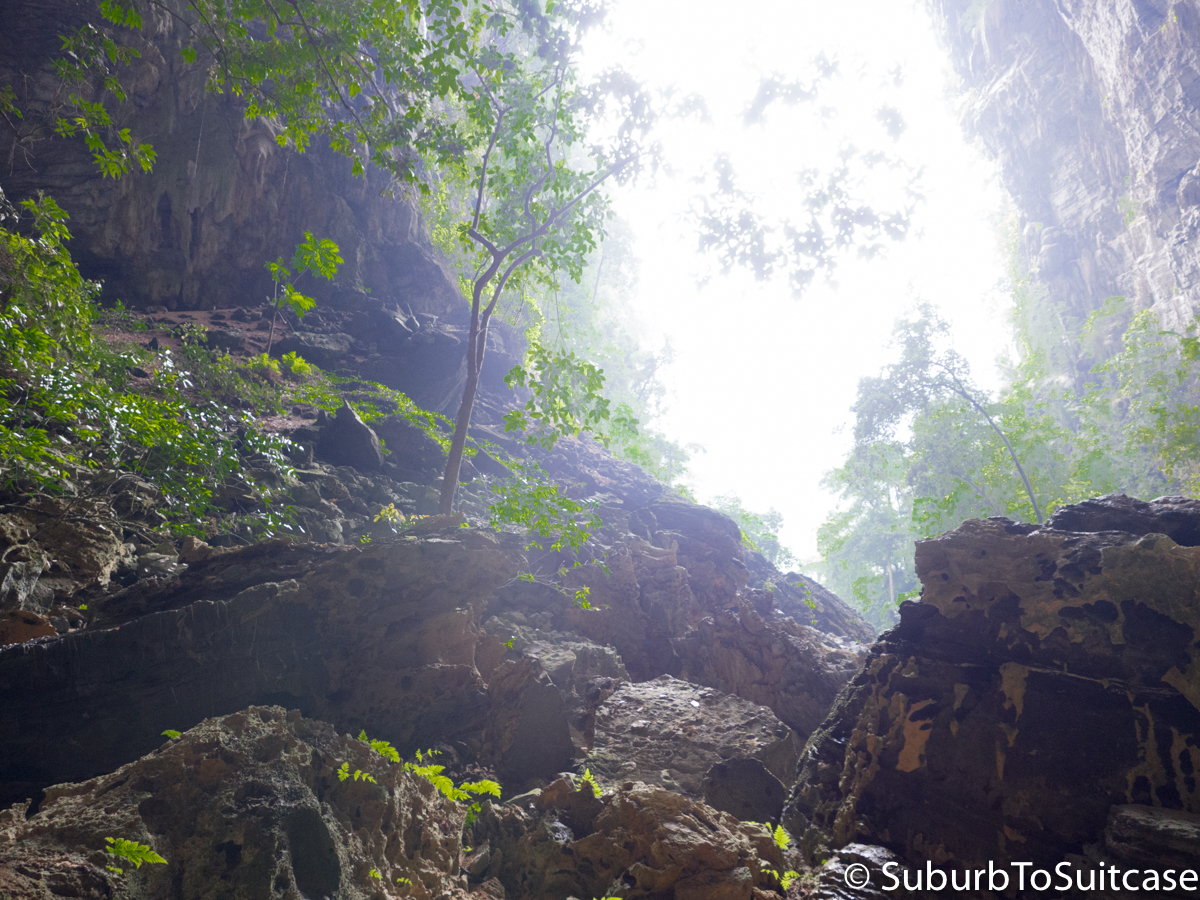
What goes in must go out – this is the bouldering required for exit.
